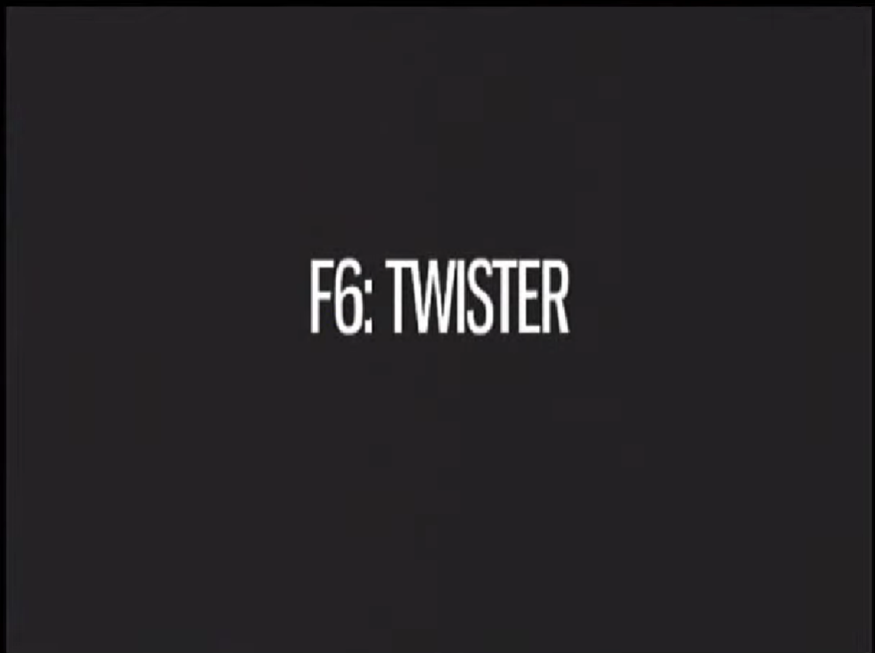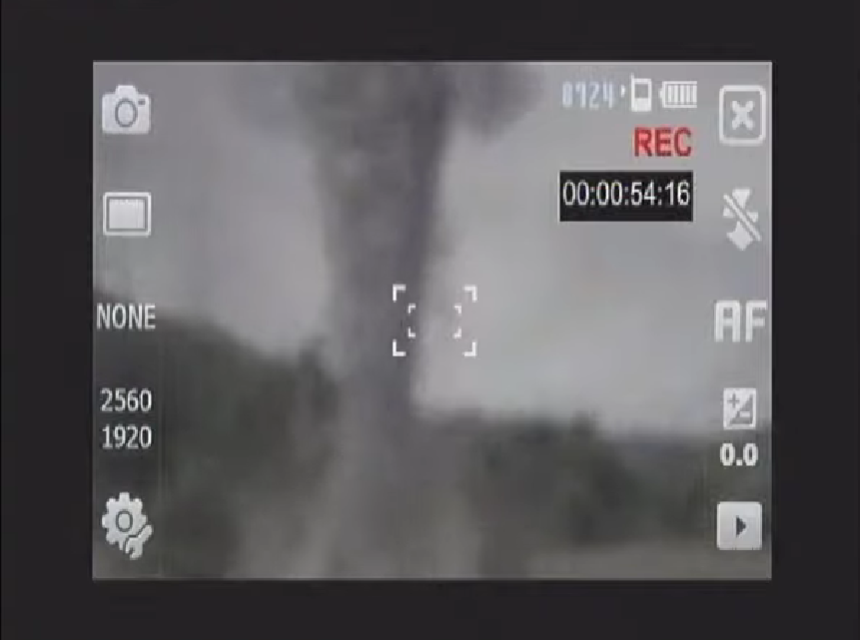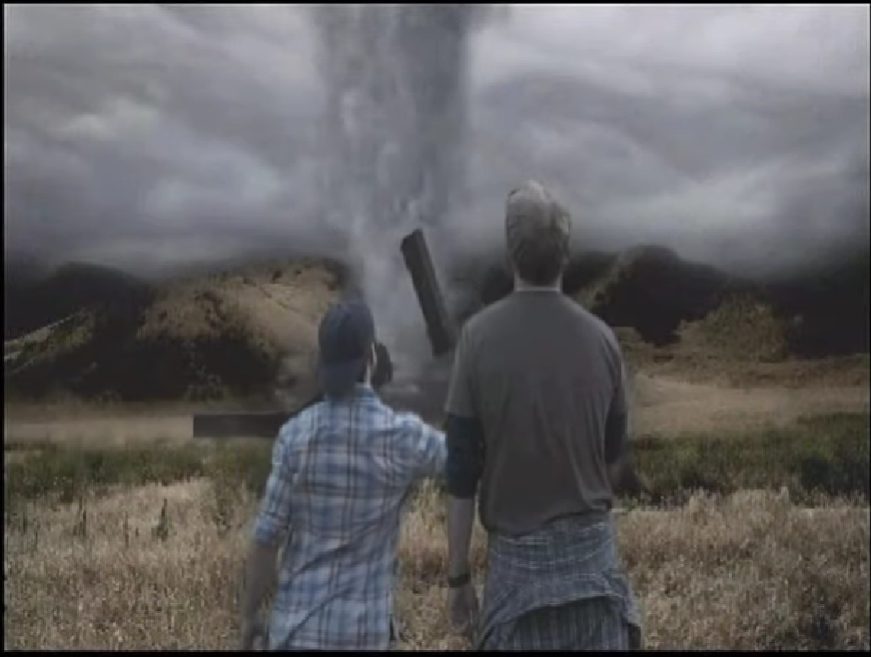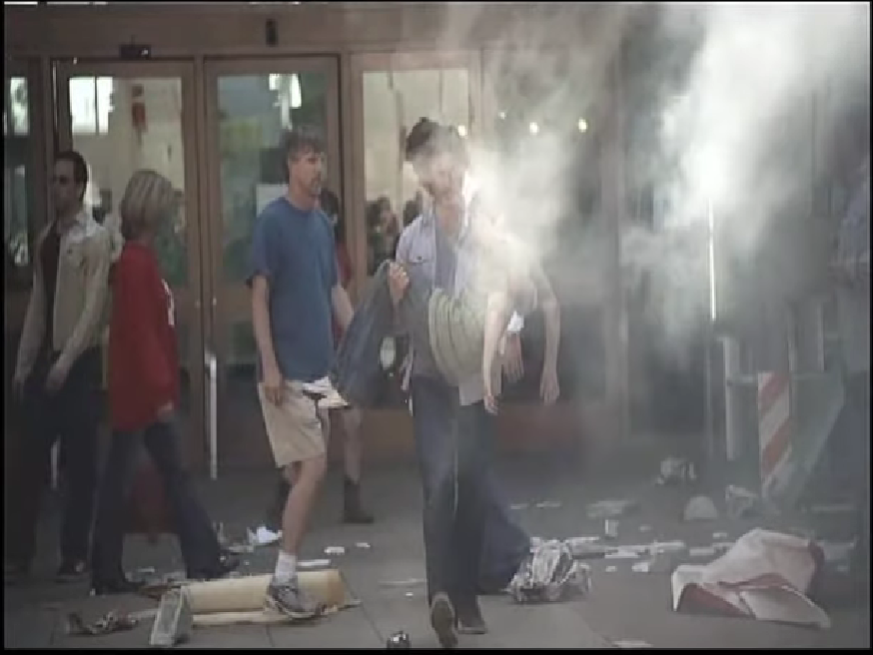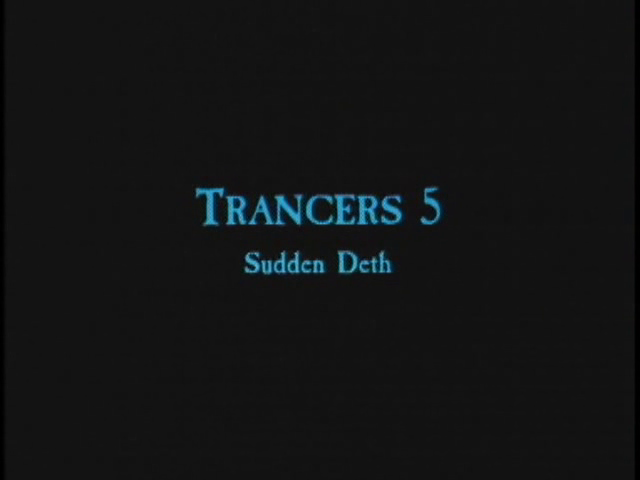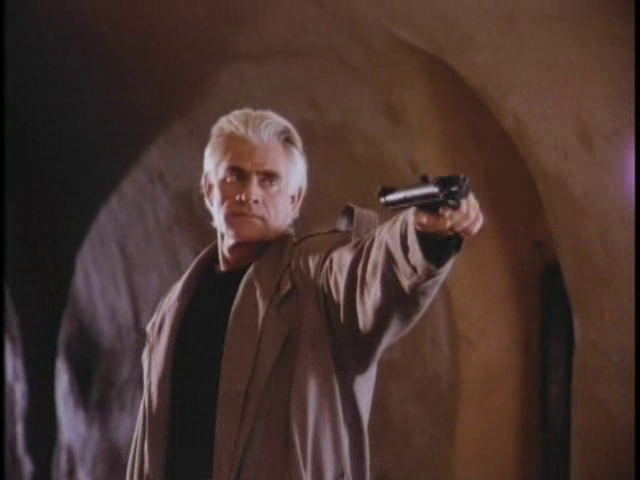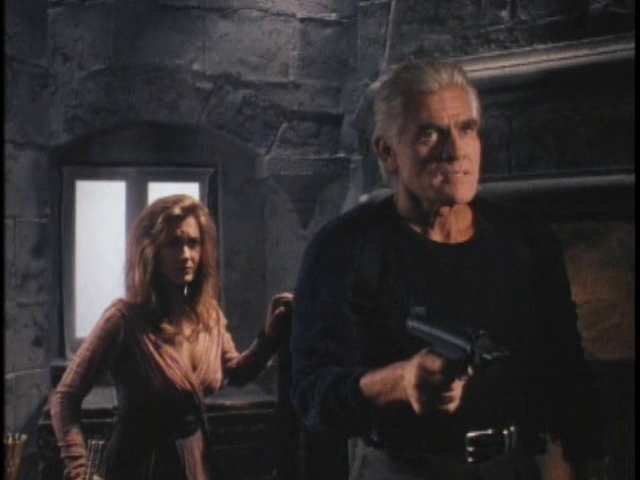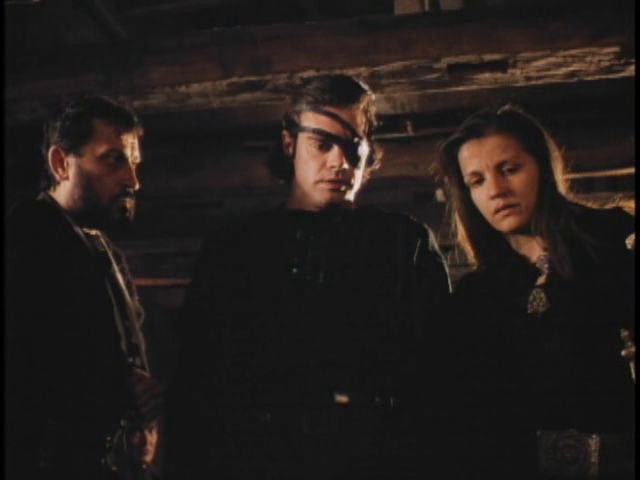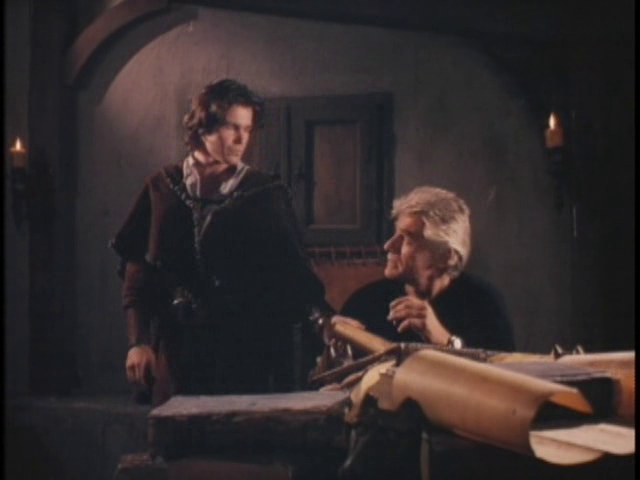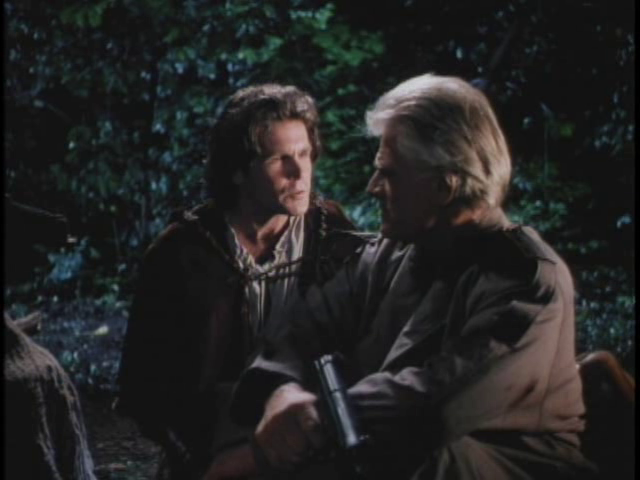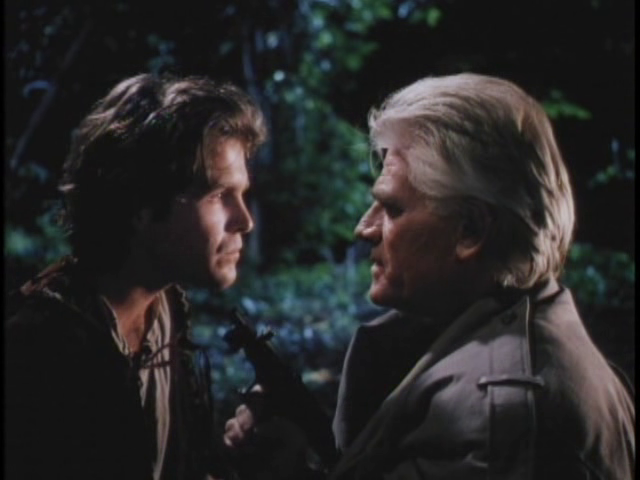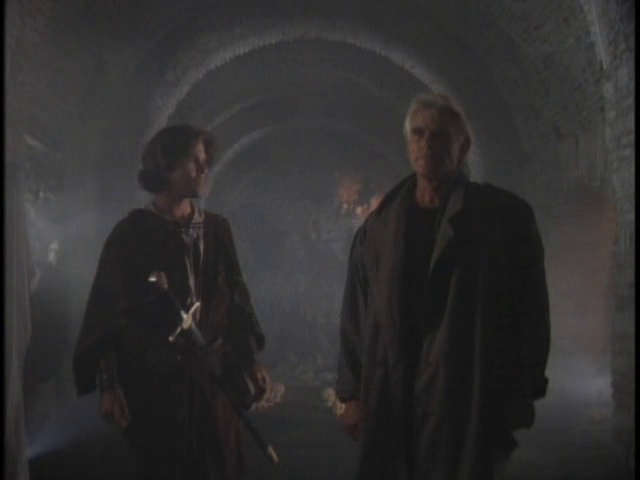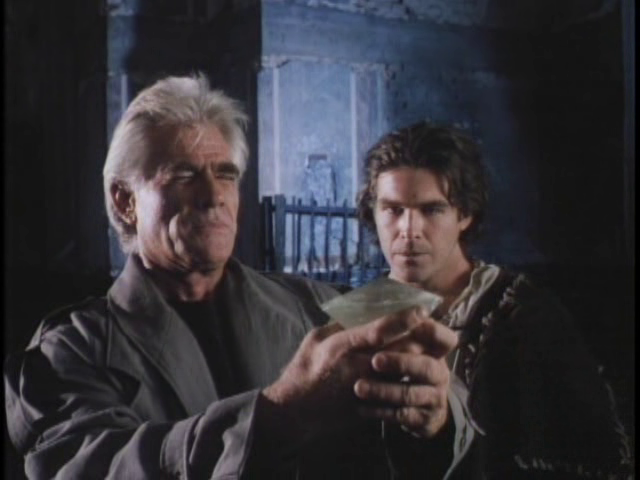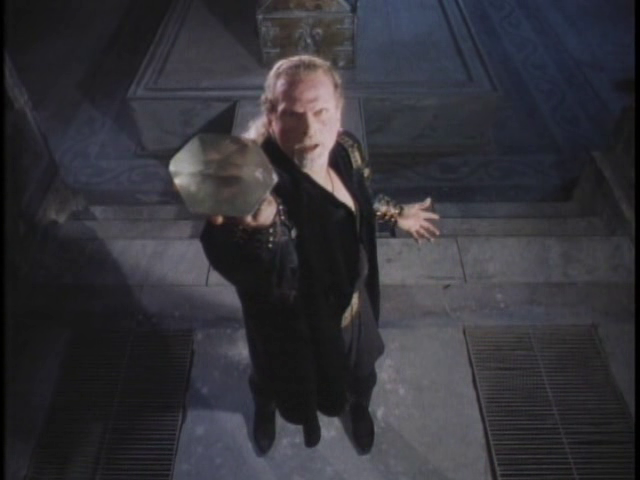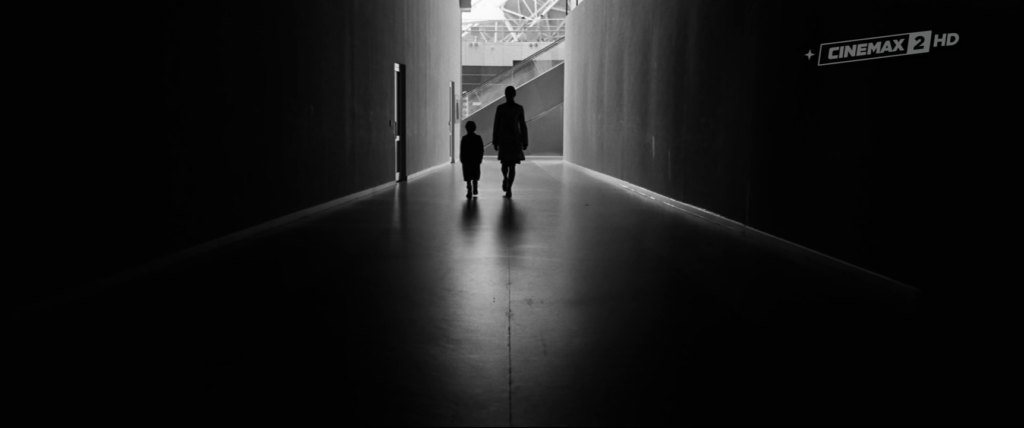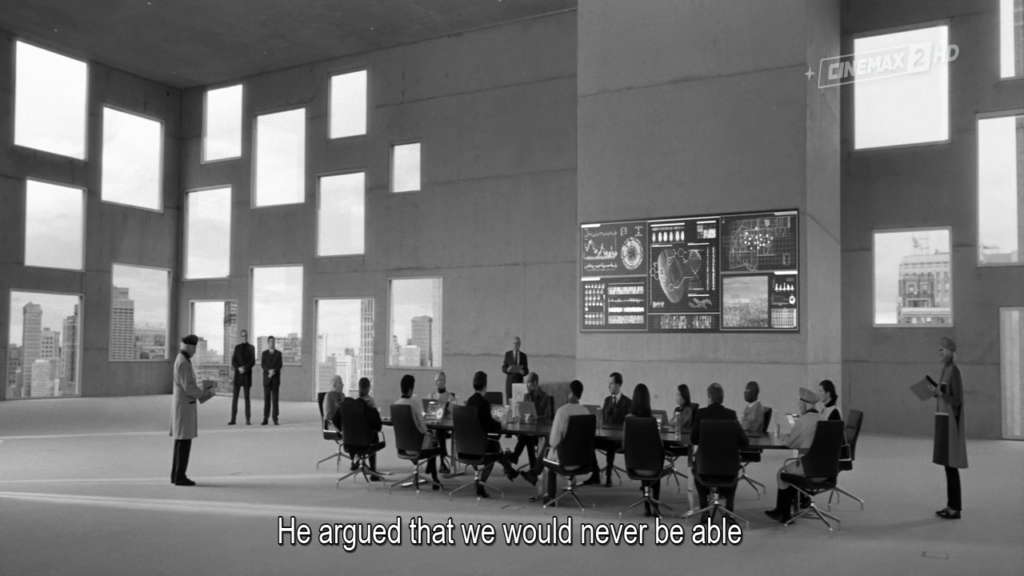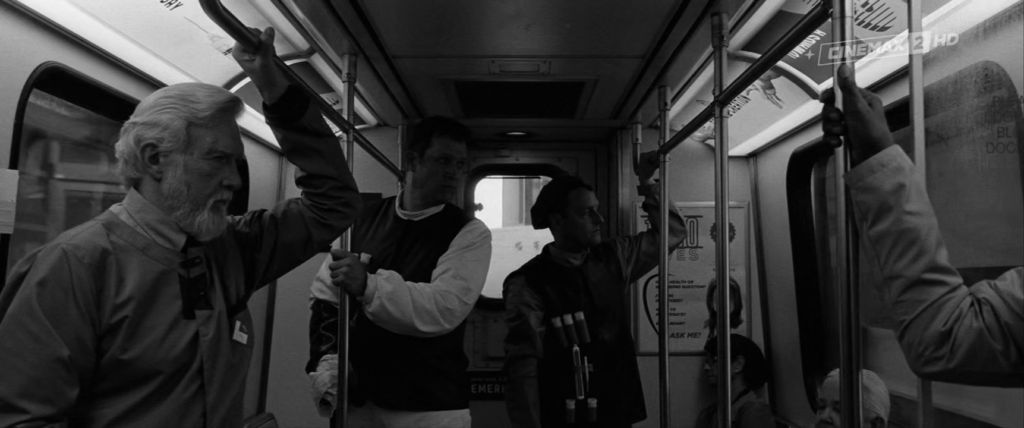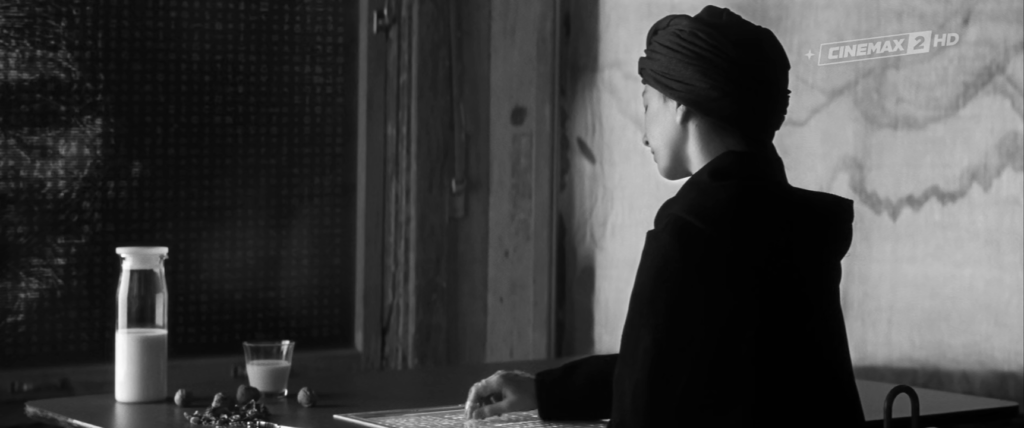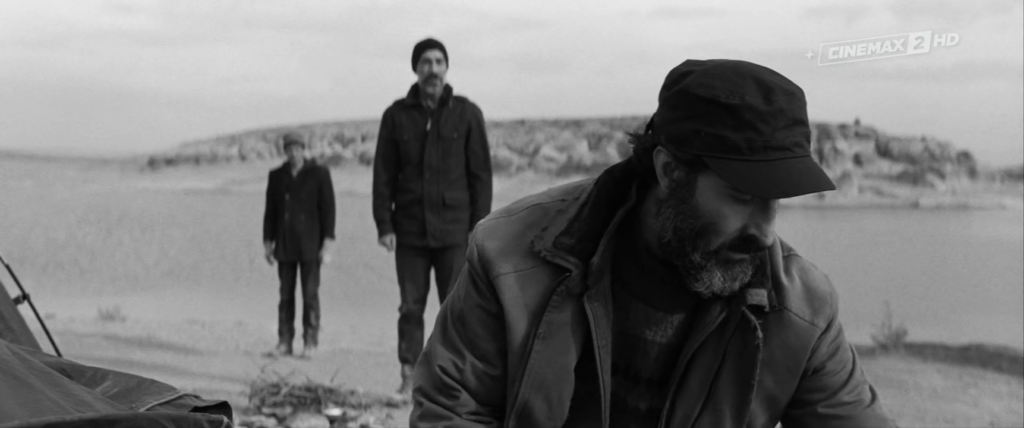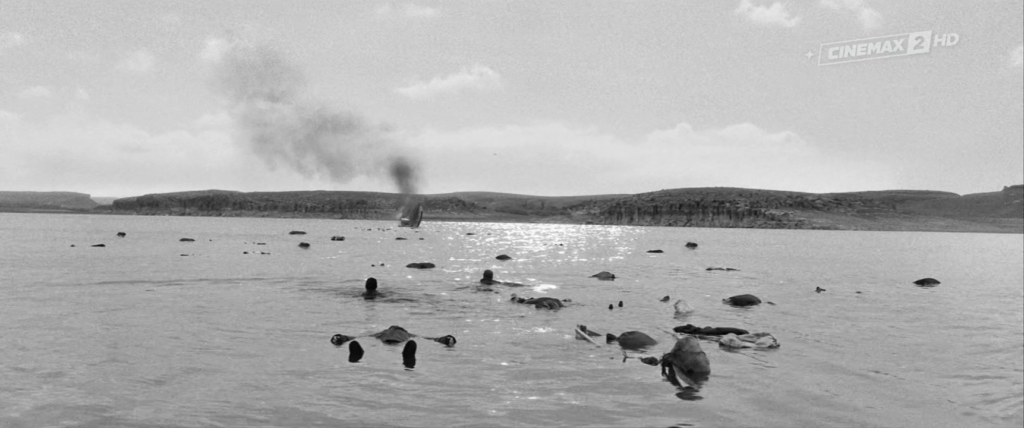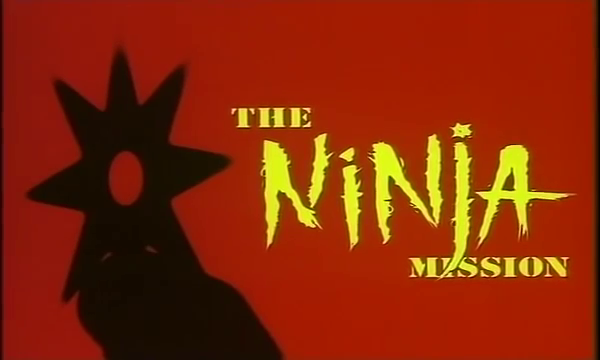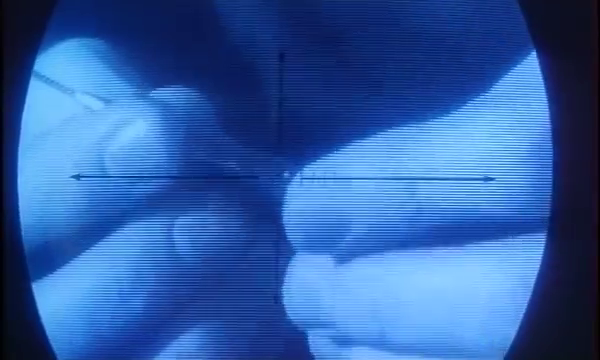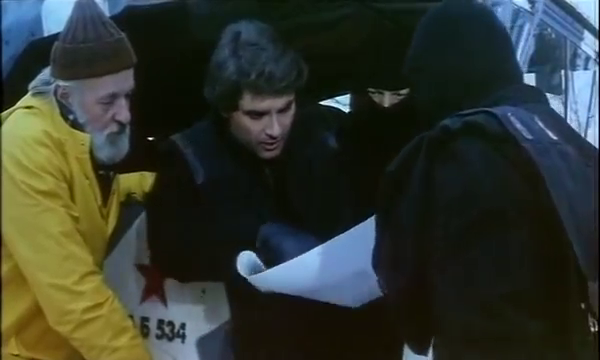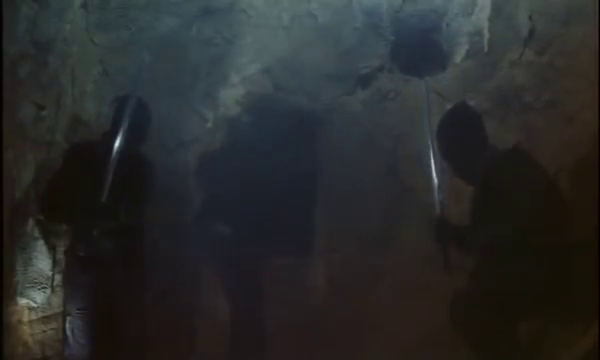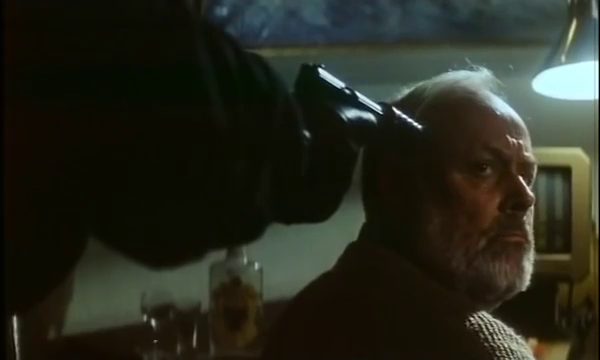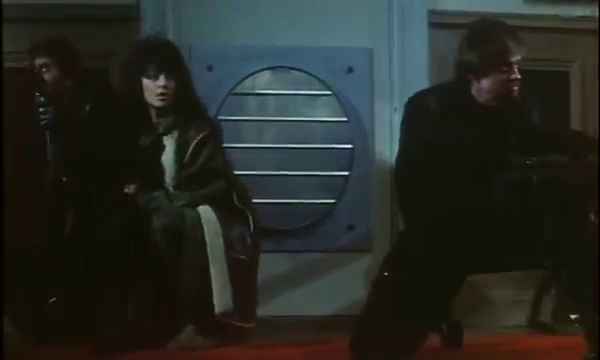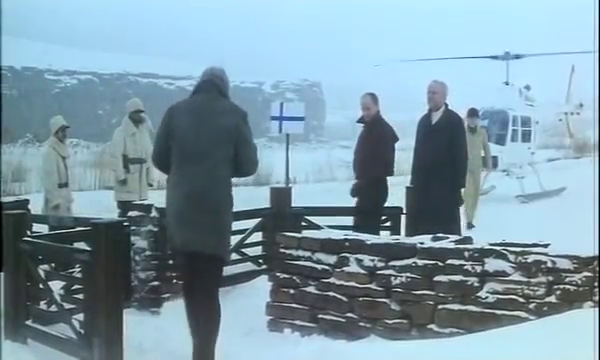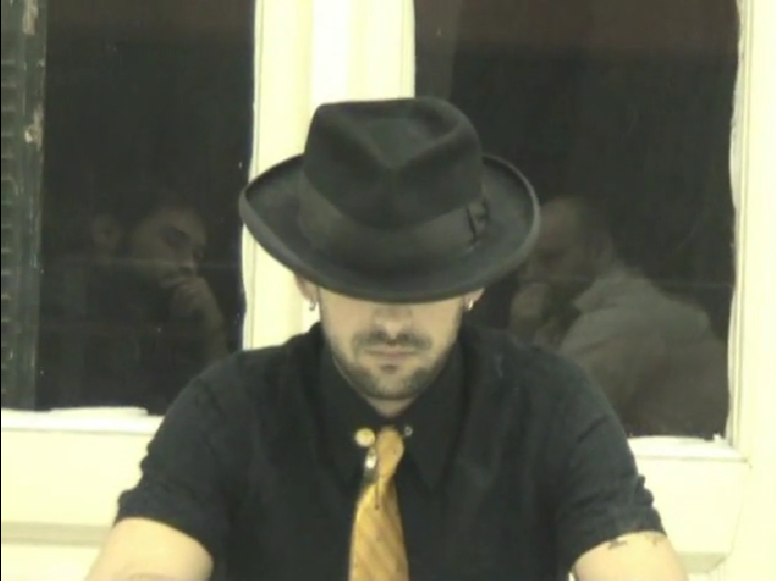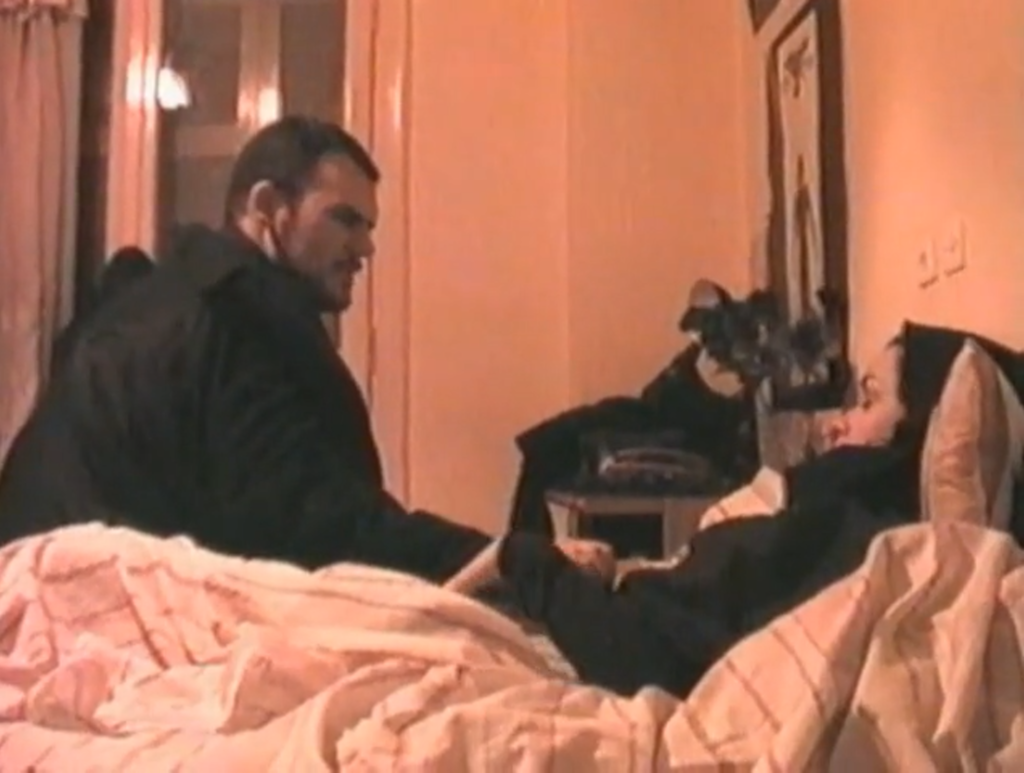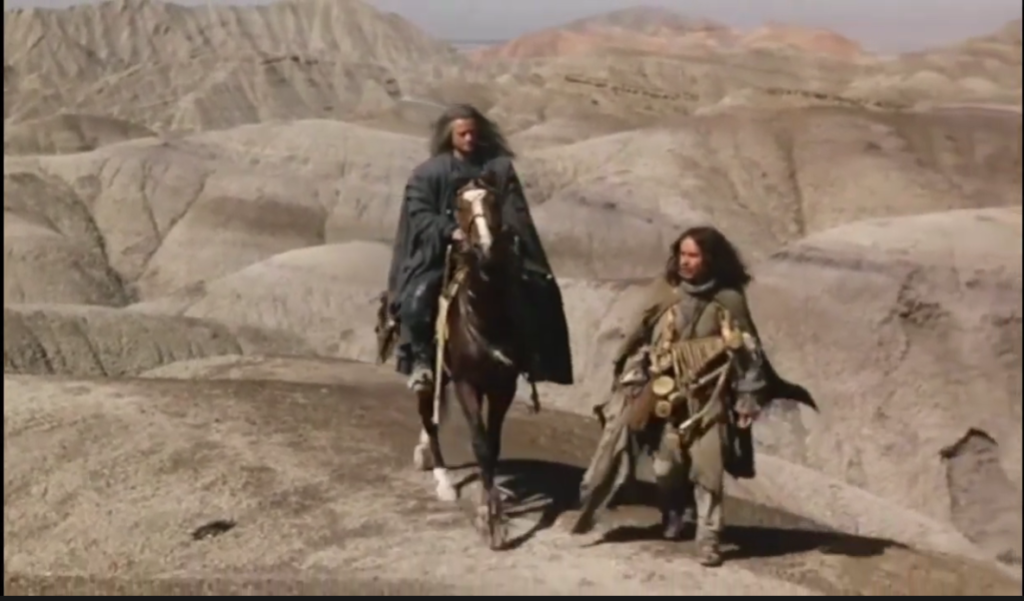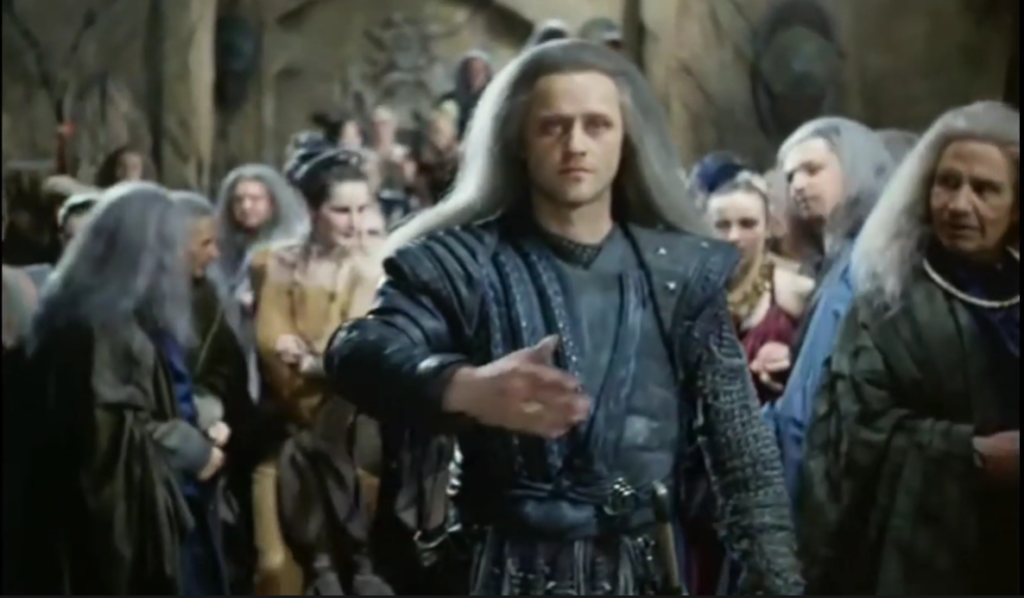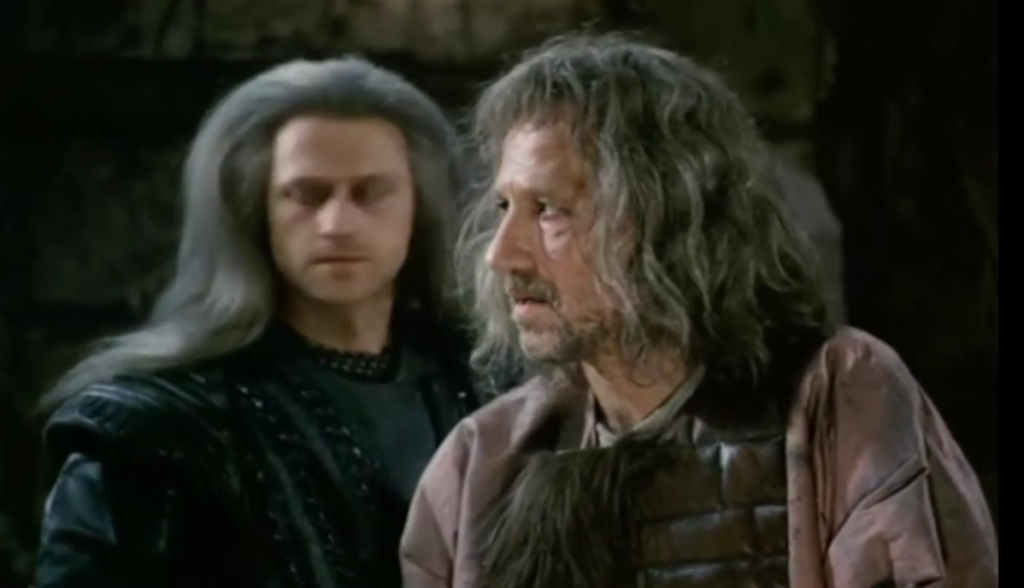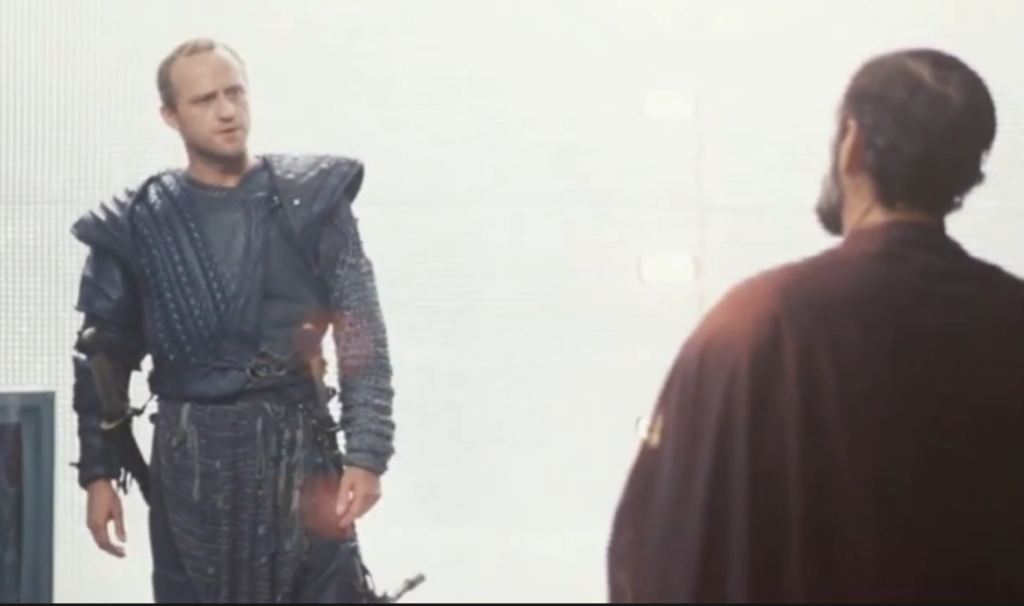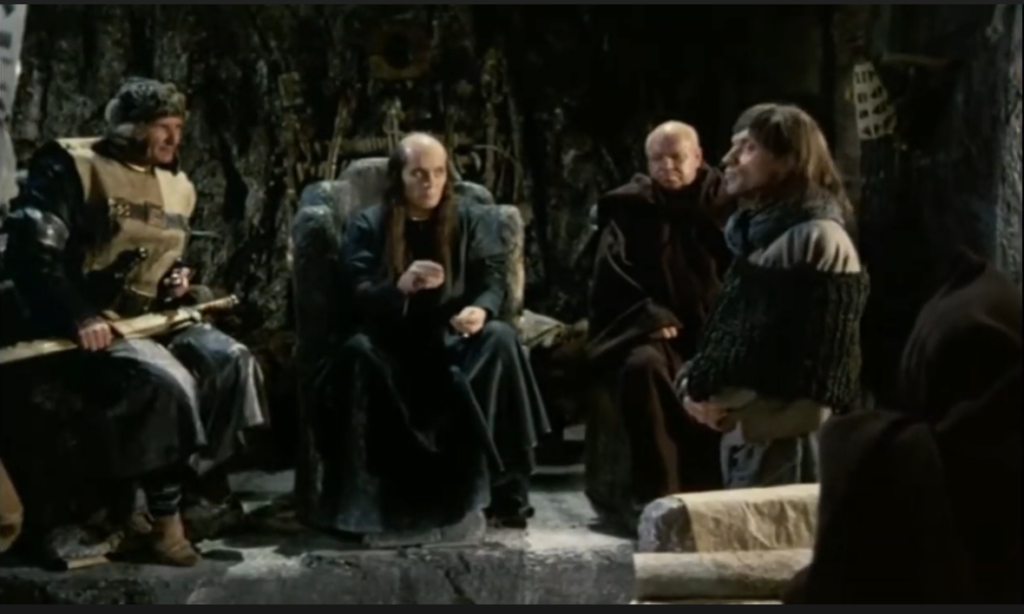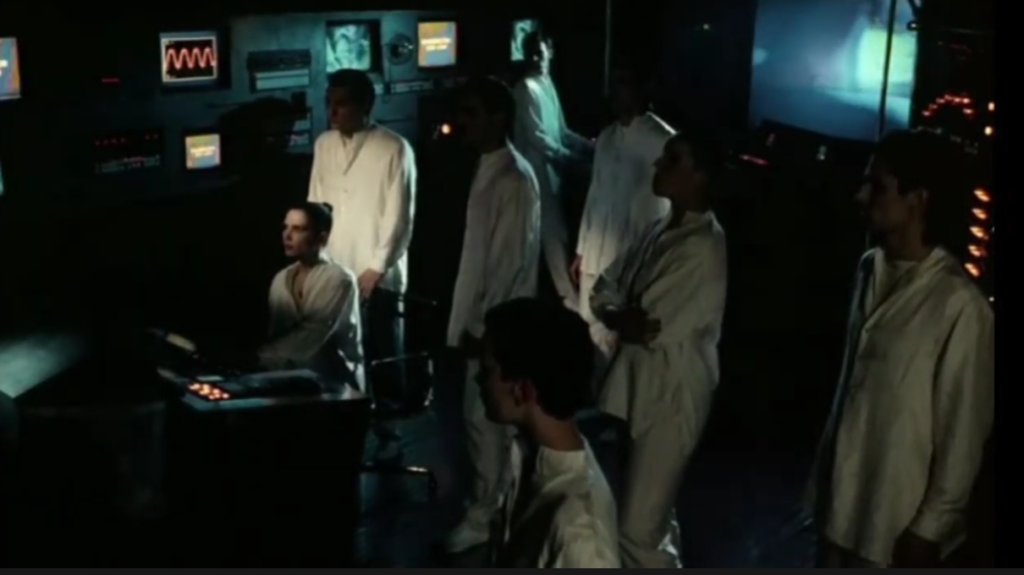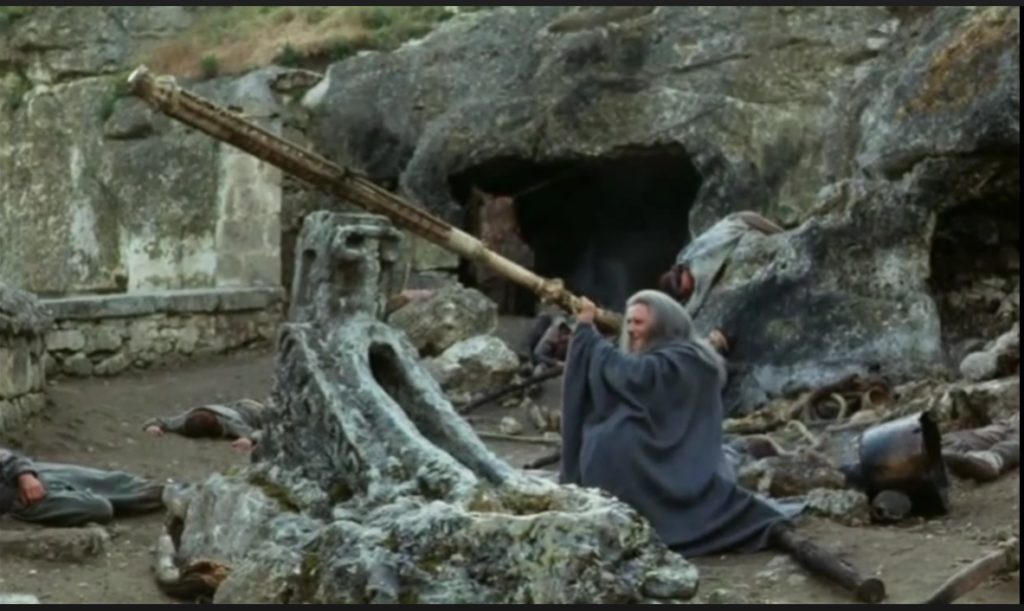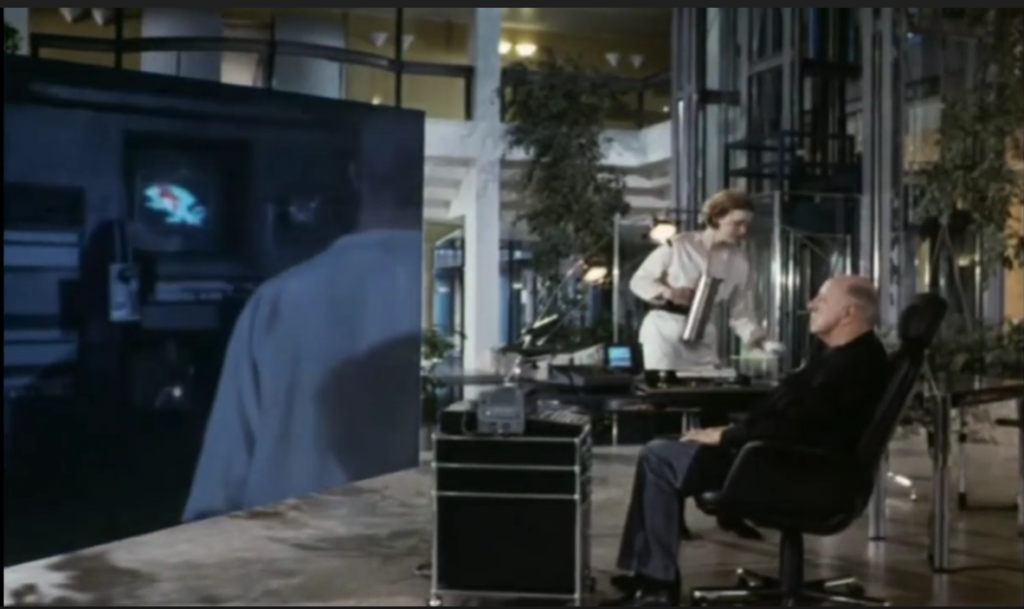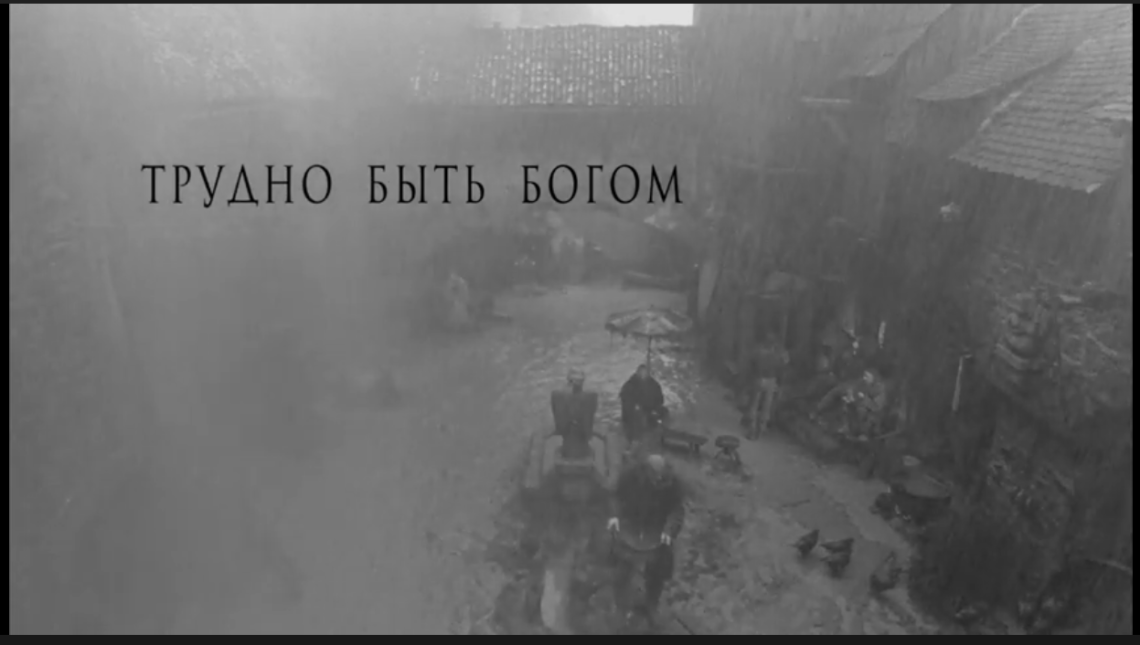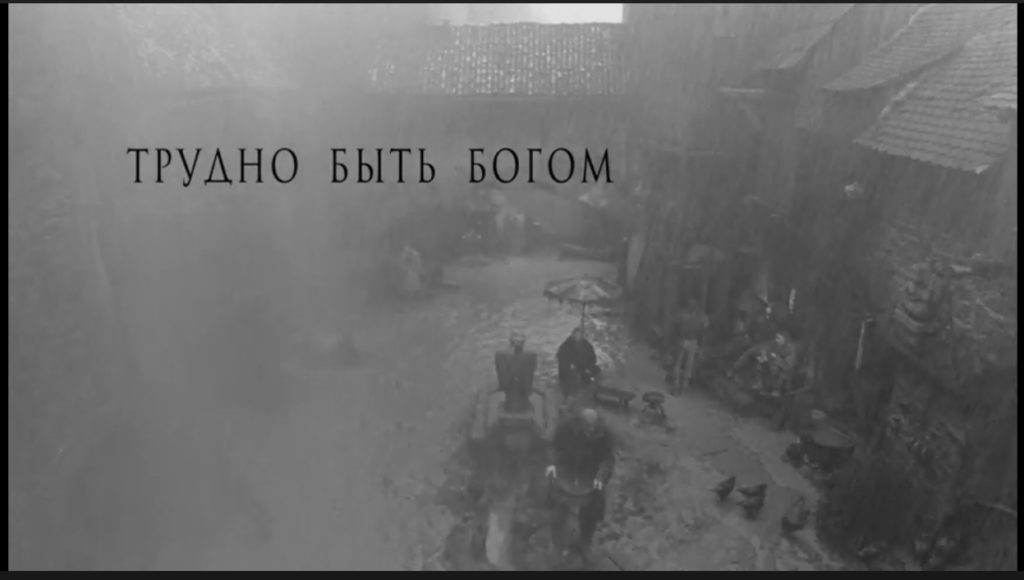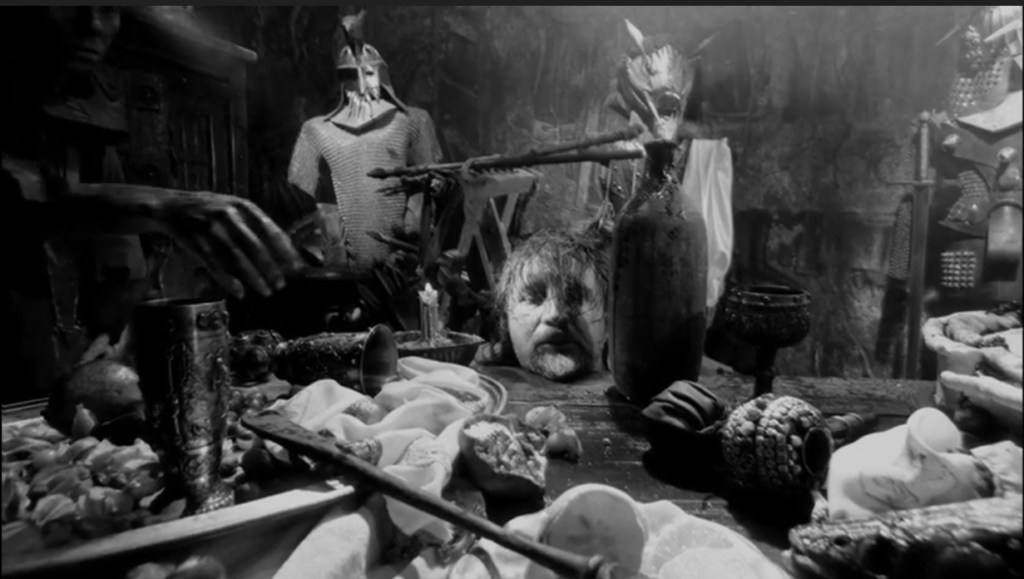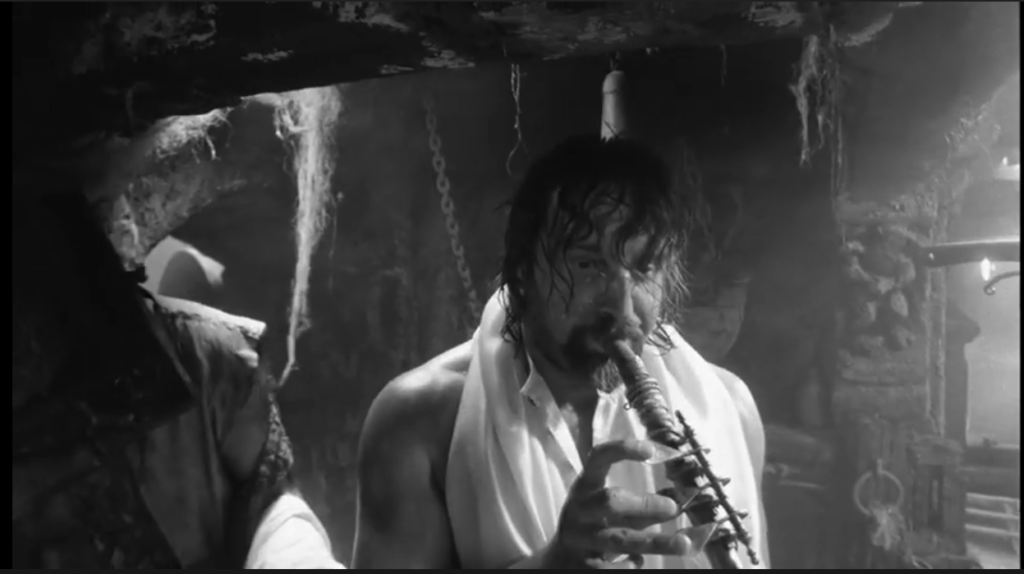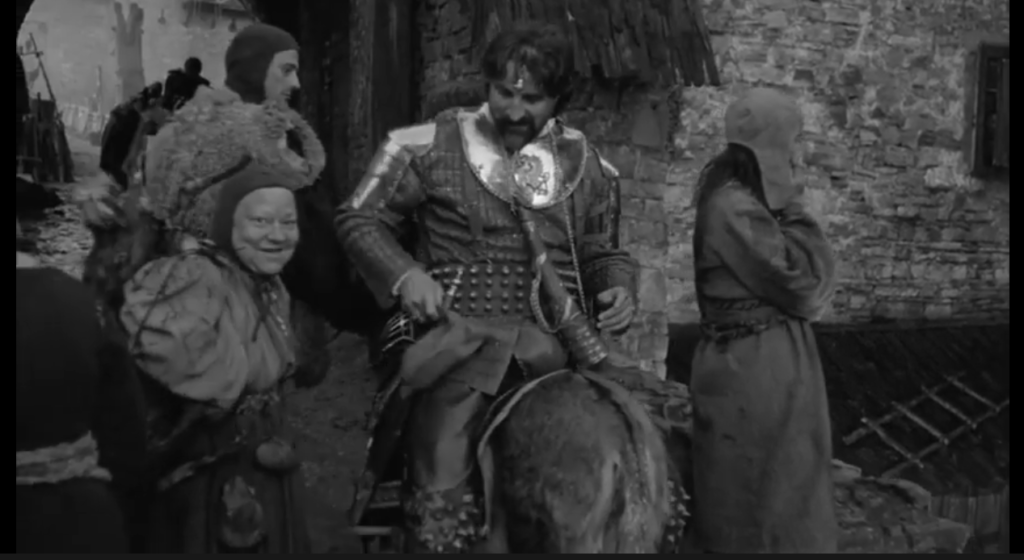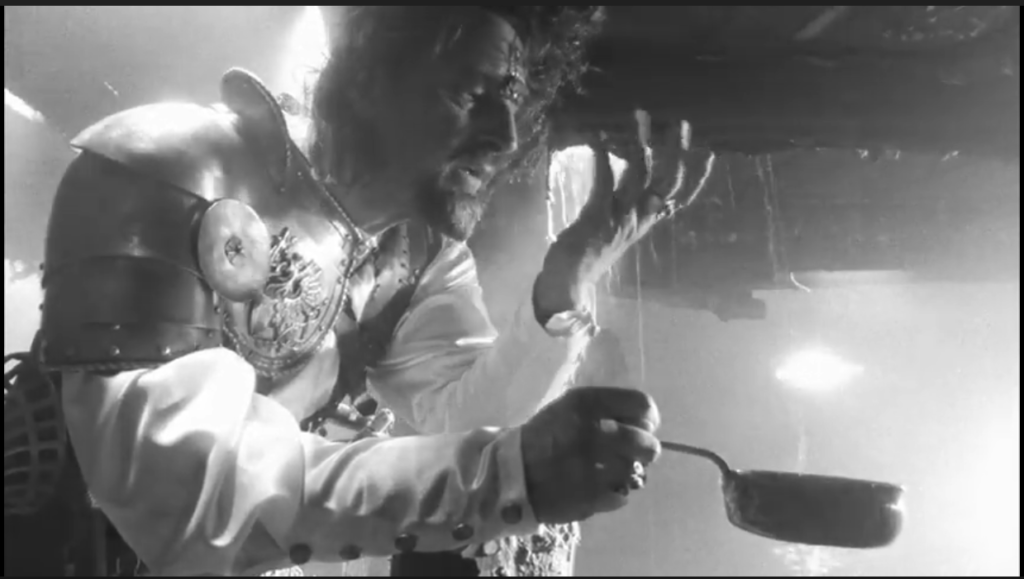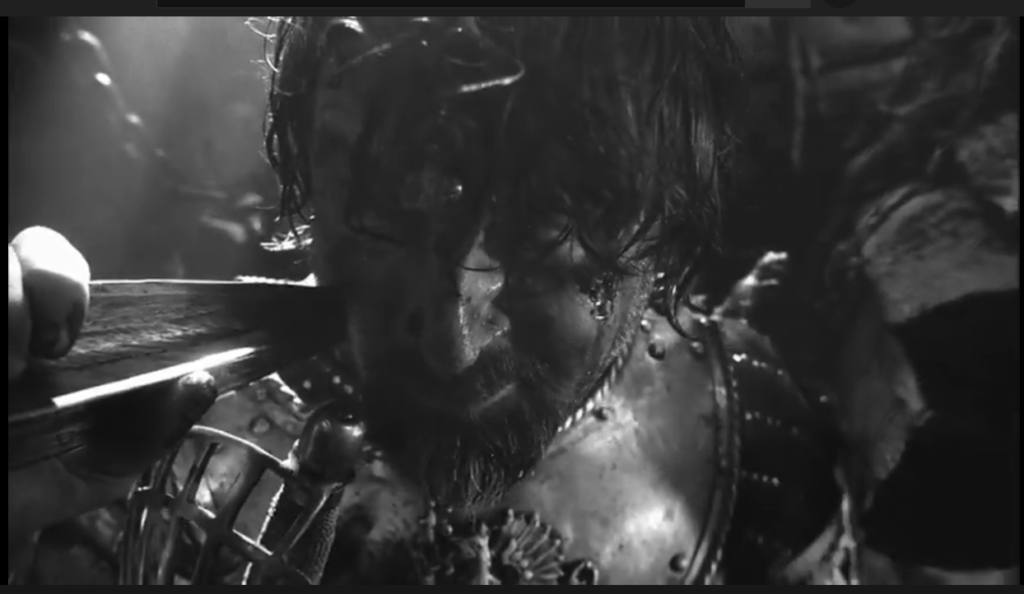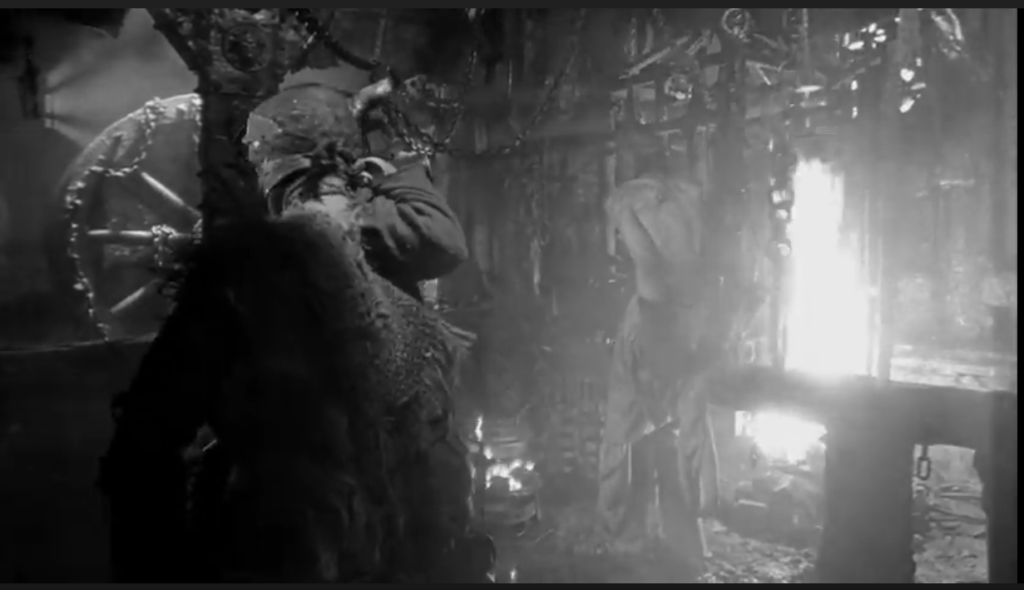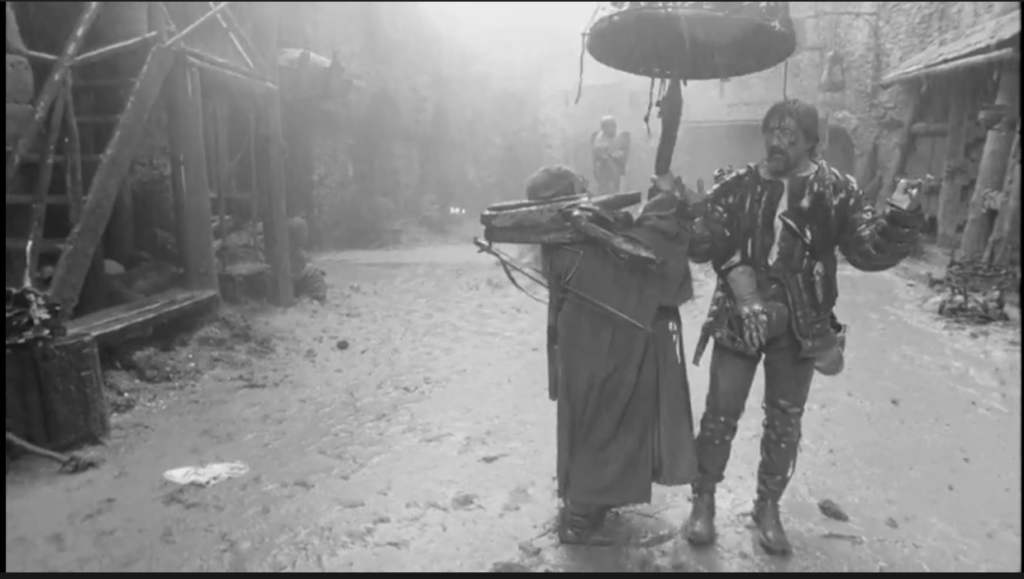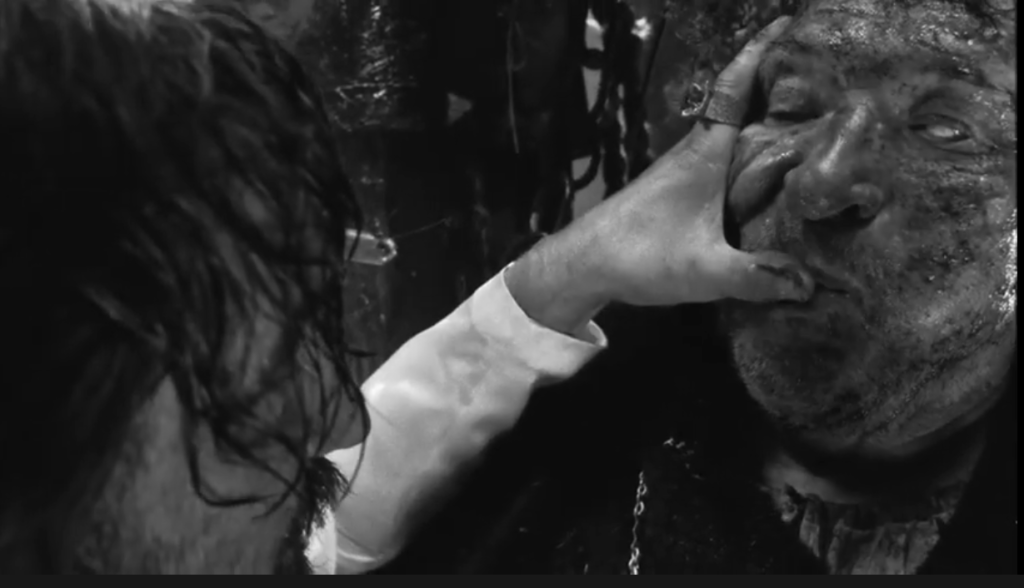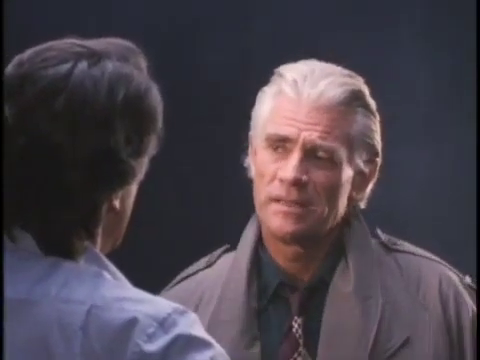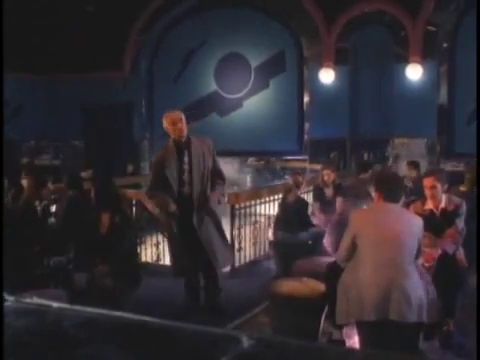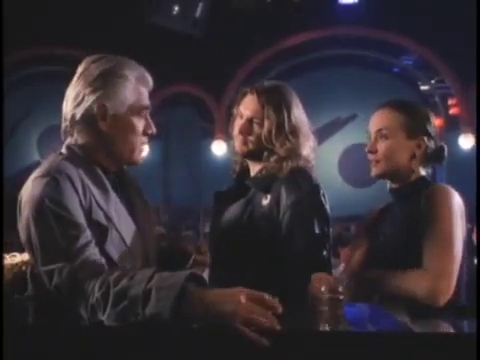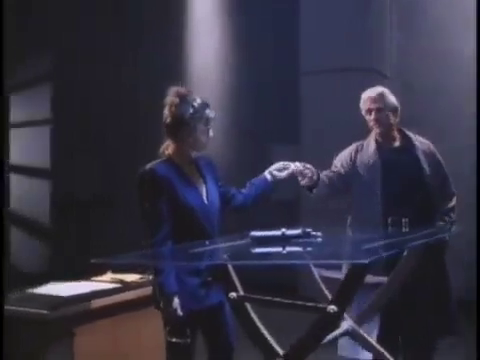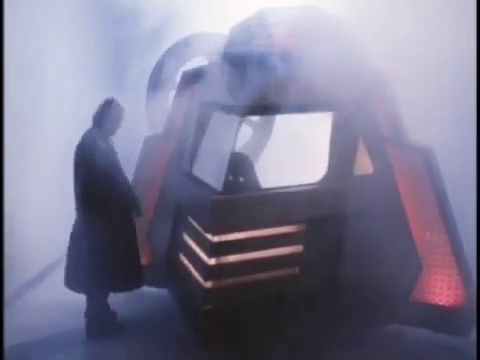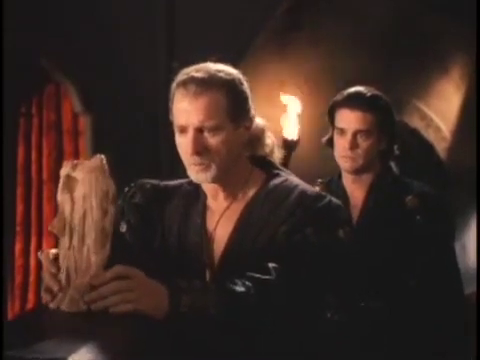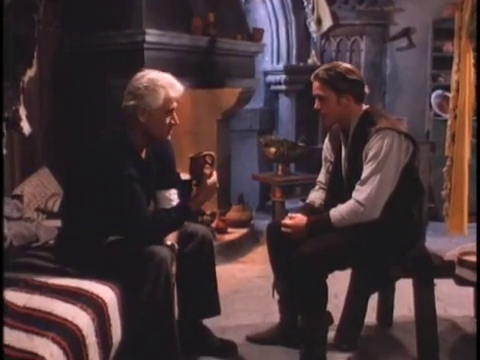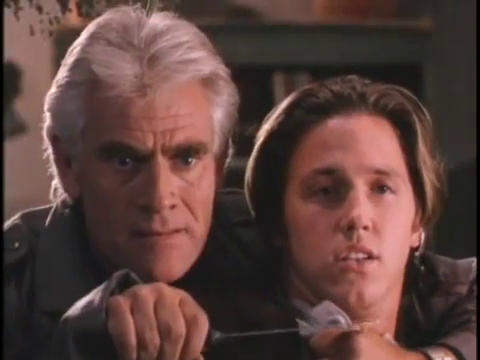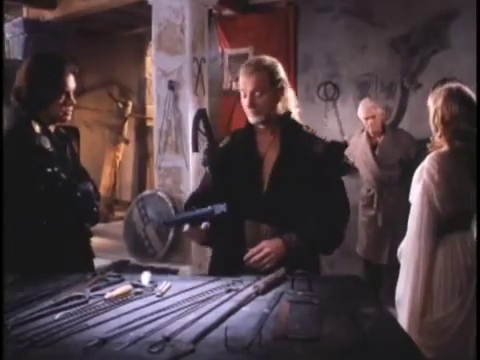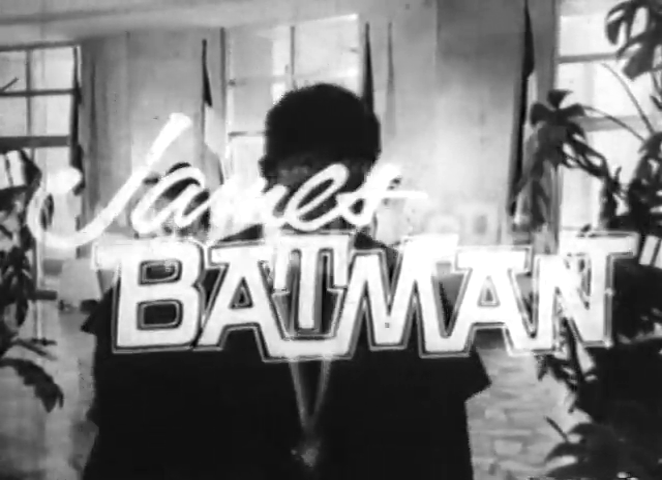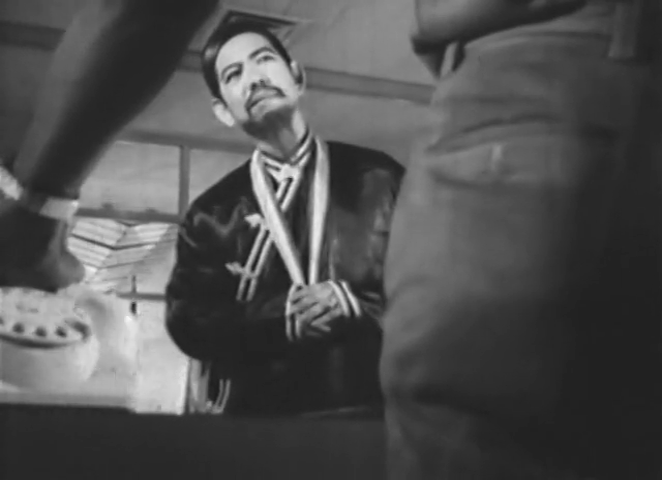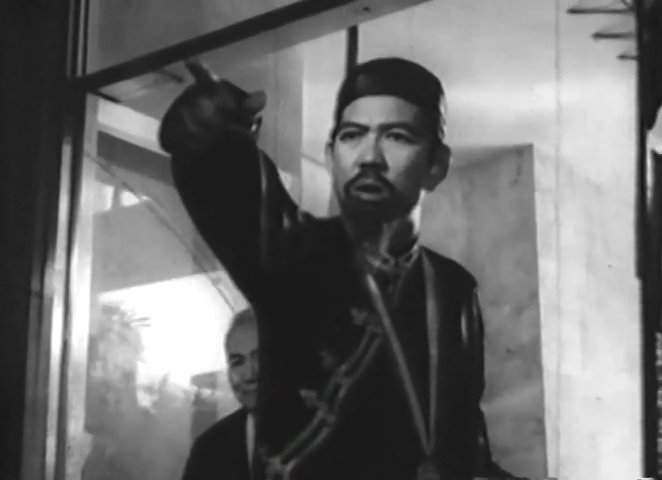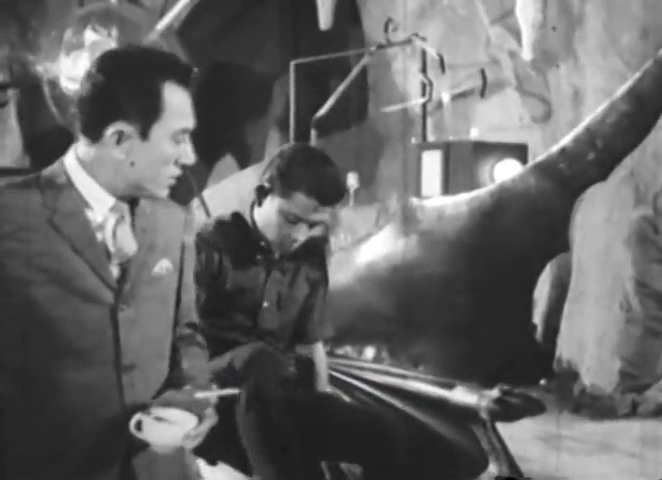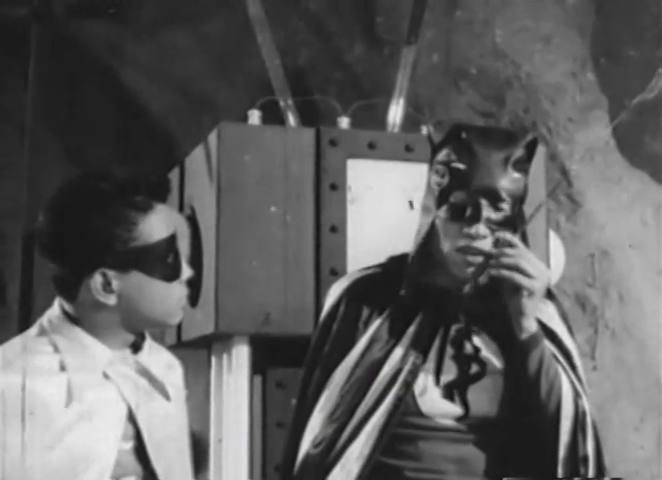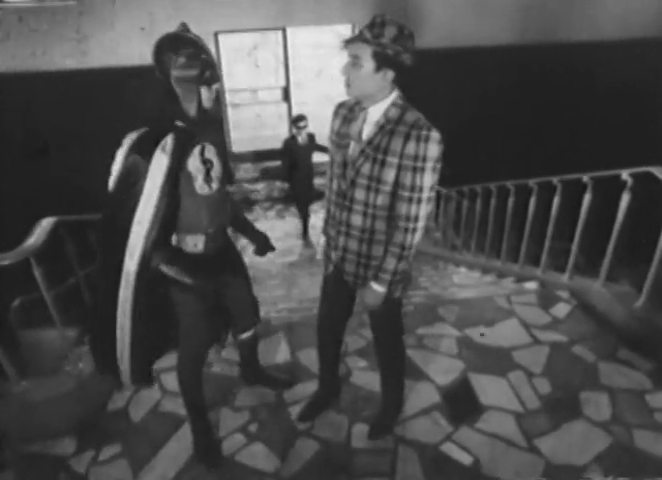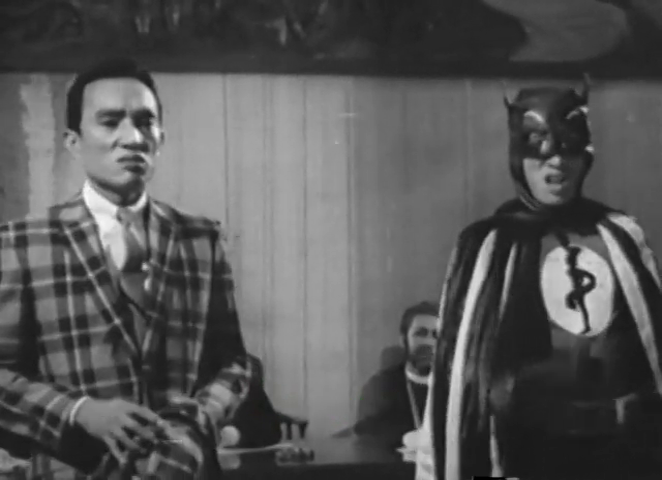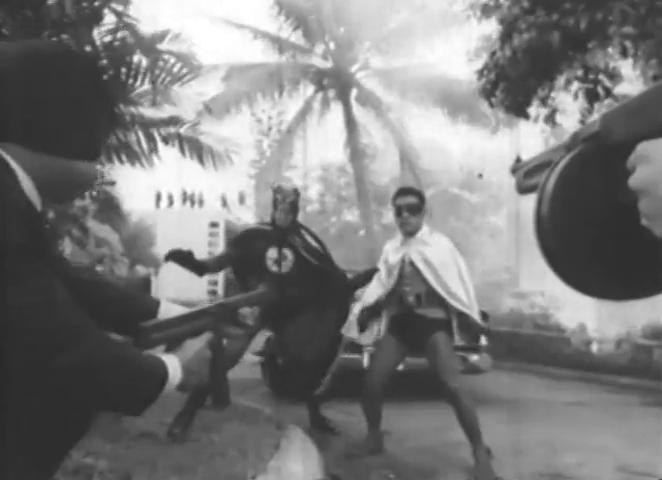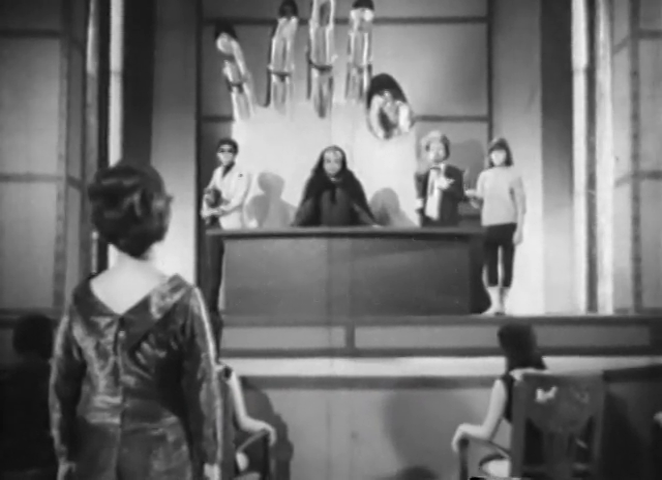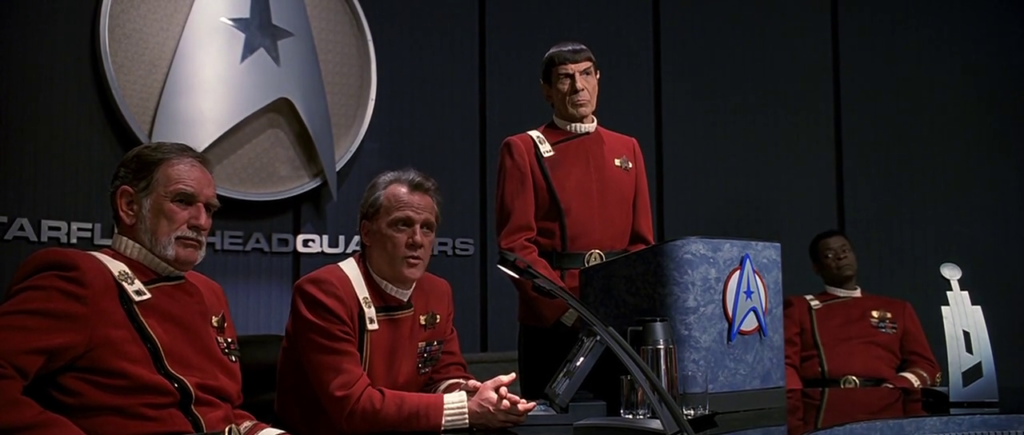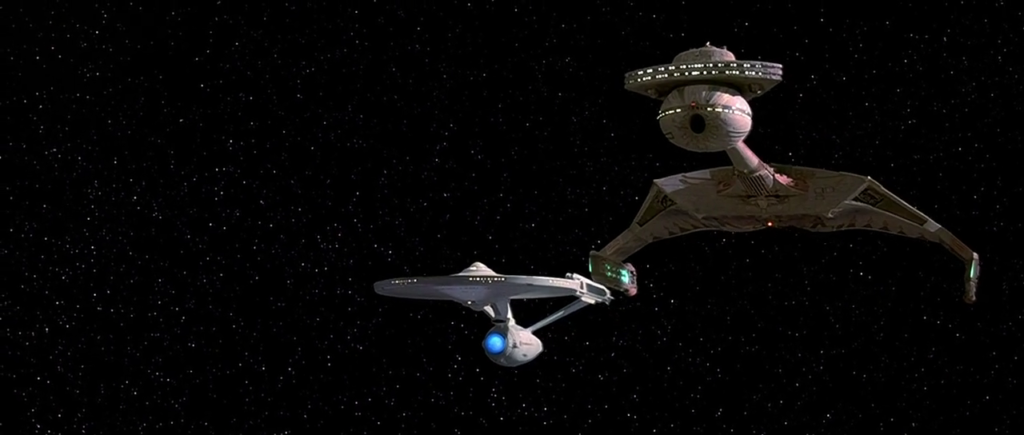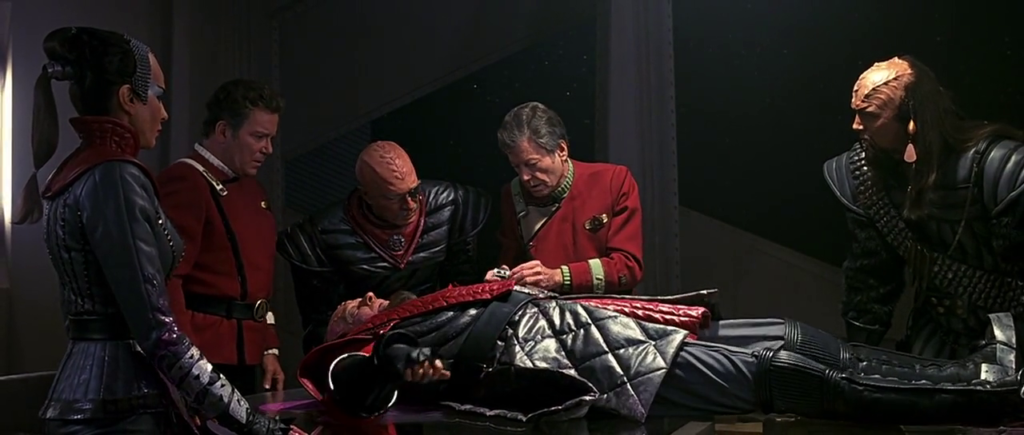-
#486 – Christmas Twister (2012)
Christmas Twister (2012)
Film review #486
Director: Peter Sullivan
SYNOPSIS: Ethan Walker, a meteorologist, detects a tornado in Texas that he believes is a herald for much stronger tornadoes that are about to ravage Texas over the coming day. His wife Addison, a local news anchor, is initially sceptical, but believes him as more tornadoes start to appear. As the storms worsen, it is a race against time as Ethan and Addison try to get their kids to safety, and convince the local TV station to warn people to seek shelter…
THOUGHTS/ANALYSIS: Christmas Twister (Also known as F6: Twister) is a 2012 TV disaster movie about a twister at Christmas time (unsurprisingly). The film starts off introducing Ethan Walker, a meteorologist who detects a tornado in the Fort Worth area of Texas, which he believes is a precursor to a much more devastating series of tornadoes. However, his modelling, which accounts for climate change affecting the frequency of tornadoes, is not used by others, and has gotten him into trouble before by causing mass panic in Chicago when no tornadoes happened. He calls up his wife Addison, a news anchor at the local TV station, to warn her, but she is initially sceptical, but more tornadoes happen, and she is convinced to help him. The film revolves around the Walker family, as Ethan tries to get their kids to safety, and Addison tries to convince the news station that the danger is real and to get the public to seek shelter. This very typical made-for-TV disaster movie offers up a disaster of relatively mild proportions, with character arcs that are predictable and without interest. The premise of the main character having the only accurate weather modelling because his accounts for climate change is a bit absurd, and his explanations are loaded with jargon that makes little to zero sense. The typical three act structure is present, but doesn’t really build the story up to a climax, and just repeats the same set-ups throughout. Probably the worst thing about it is there’s no real scale of the disaster that everyone talks about: the death count is mentioned off-hand as being about 20-30, and there’s only around three to four on-screen deaths, with only one of those being an established character. As it stands, there’s no real sense of danger to the main cast. Also, there’s the fact that nearly every building has a tornado shelter so it’s hardly a mammoth task to get everyone to safety when they see a tornado coming. Ethan going to pick his kids up from school just seems a bit pointless when the schools will obviously have tornado shelters in an area that is frequently hit by tornadoes.
For a disaster movie, there’s not a lot of destruction to see: the film uses obvious stock footage of the aftermath of a tornado, but even that doesn’t look too bad. The images of people rolling away tires and other debris in the aftermath is just so contrived it’s hilarious. Most of the film also doesn’t take place during a tornado, rather it just deals in the aftermath of them, and the danger seems to mostly consist of just rescuing people from underneath rubble. The budget of the film clearly doesn’t have the capacity to have whole scenes be blown about and destroyed, and so we are left with some mild shaking and some really bad CG renders of tornadoes that don’t really look that impressive or strong: for example, you see people within about ten metres or so running away from the tornado, which at the strength it supposedly is, would suck them up right away. Again, this makes the tornadoes seem much less threatening than they are. The characters do have their own story arcs and purposes, which I guess is a positive, but it’s all very standard stuff that you’ve seen plenty of times before. None of the “jokes” are particularly funny: the one scene with tornado chasers barely escaping with their lives ending with the line “This is gonna make us a fortune on YouTube!” made me want to just walk away from this wreck.
If you’re looking for some Christmas spirit in this film, there isn’t really any. The film’s setting in winter is somewhat important to the story, as the tornadoes appear in December outside of tornado season due to global warming etc. but there’s no other sense of it being Christmas apart from one scene with a mall Santa. The weather is basically summer, and there are no Christmas decorations or anything adorning the scenes. All in all, it just feels like a typical low budget disaster film that fails to really portray any big scope of disaster, focusing instead on a fairly typical family that aren’t ever in any real danger (because they live in an area frequented by tornadoes, so there’s plenty of tornado shelters). Don’t ruin your Christmas spirit by watching this.
-
#485 – Trancers 5: Sudden Deth (1994)
Trancers 5: Sudden Deth (1994)
Film review #486
Director: David Nutter
SYNOPSIS: Jack Deth is still stuck in another dimension on the planet of Orpheus following an accident while time travelling. He learns that the only way to get back home is to get the “tiamond” from an ancient castle of terror. However, the trancers that Deth previously defeated are out for revenge…
THOUGHTS/ANALYSIS: Trancers 5: Sudden Deth is a 1994 film and the fifth in the Trancers series. The film picks up right where the last film left off…but not before showing an eight minute recap of what happened in Trancers 4. Given that this is a Full Moon Features production, and they are notorious for padding out runtime, this shouldn’t be surprising. Trancers 4 and 5 were filmed back-to-back, so it’s no surprise that they flow almost seamlessly into one another, but the problem with that is they don’t really distinguish themselves from each other, and it stretches out the premise far longer than it needs to be. Throwing Jack Deth into a medieval fantasy world was bad enough, but making two whole films about it really prolongs the agony. The film also decides to resurrect the main villain from Trancers 4 less than twenty minutes in (less if you don’t count the re-cap) and with relatively little difficulty, which further cheapens any accomplishment of Deth defeating him in the first film.
This time around, Deth must travel to the adequately named “Castle of Unrelenting Terror” to acquire the Tiamond (Time + diamond…get it?) and use its powers to return to his own world. So the film has this “quest” as its main plot point, which really just involves some minor inconveniences along the way. There’s some attempted character development between Deth and Prospero, the son of villain Lord Calihan who turned against his Father, but its all a bit arbitrary. Nothing is really explained, and there’s very little attempt at world-building. The resurrection of Lord Calihan from a painting of him almost spontaneously raises questions that are never answered, and just replays the conflict of the previous film with very little else at stake. The rest of the cast is about the same, and offers nothing new, and most of the criticisms of the previous film still stands.
The Trancers franchise was never a blockbuster franchise, but deviating from its sci-fi Bladerunner/Terminator roots to this weird medieval setting has removed the series from anything that made it interesting. The only really interesting feature of the film again is Jack Deth himself, whose wise-ass character is still somewhat likeable and entertaining in his portrayal, although he is not given any of the decent one-liners or retorts that made him so. The setting really isn’t appropriate for the character of the franchise; maybe if they really pushed the “fish out of water” setup there could have been some funny moments with Jack’s no nonsense attitude, but as it stands there’s not much that this film contributes to the series, and a further slide down in the franchise’s quality.
-
#484 – Grain (2017)
Grain (2017)
Film review #484
Director: Semih Kaplanoglu
SYNOPSIS: In a post-apocalyptic world where most of the planet’s soil cannot grow plants and food, the world is divided between the remnants of the cities, agricultural zones, and the inhospitable wastelands where nothing grows, separated by barriers that kill anyone that get too close. Professor Erol Erin, a seed geneticist, learns of a researcher whose thesis predicted the current genetic crisis, and sets out into the wasteland to find him and get answers about how to solve it.
THOUGHTS/ANALYSIS: Grain is a 2017 post-apocalypse film. In this post-apocalypse, we see that society is divided into the remnants of the cities, and the agricultural zones, each ruled by powerful corporations and elites. There is also the wastelands, which makes up the majority of the planet, and is populated by genetically incompatible people who suffer the harshness of the inhospitable environment. Separating them are giant energy barriers of some sort that kill anyone that touches them, maintaining the gap between the elites and the rest firmly maintained. We don’t get much more insight into the state of the world than this, but it’s setup is fairly familiar to the post-apocalypse setting, so it’s not really an issue. The cities are facing an issue where seeds and crops are unable to grow, which will turn into a full crisis if the situation worsens; the film gives some scientific jargon as to why this is happening about missing particles and stuff, but its all a bit superfluous. Professor Erol Erin, a seed geneticist, wants to find a man whose thesis predicted the crisis and how to solve it, but he has apparently disappeared into the wastelands. He illegally sneaks through the barrier and sets off in search of Cemil, who he believes can put a stop to the crisis. The film’s story is deliberately threadbare, in order to keep things open to interpretation in some way, and as such, situates itself in the vein of the more epic films like Tarkovsky’s Stalker. There are, however, a number of problems with this: the film is very front-loaded and gives a lot of time in the first half to explaining everything, and the second half in mostly silence, and the contrast splits the film in a messy way. In a similar vein, it feels like it wants to be one of those epic films, but at the same time appeal to a more Western sensibility. The runtime at just over two hours fits into a more (slightly longer) Hollywood film, but a bit too short for the longer epic films. Even as it is though, the film feels too long with very little reward for getting through it. The long scenes filled with silence are often good, but the film as a whole just doesn’t offer anything to think about or tie it all together. The film is based on a chapter in the Quran apparently, and while I can’t speak to that, maybe there’s a religious allegory in there that I’m missing. The message of the film seems to be that mankind is far too wasteful and careless about the environment and the world in which it lives, but to deliver that message in a film released in 2017 is hardly groundbreaking or impactful unless you have a really clever way to do it. Grain does not have that.
The film mostly centres around two characters: Professor Erol Erin, a scientist from the city, and Celim, a man who has abandoned the city for the wastelands. The two journey off into the wastelands together, as Erol tries to survive Celim’s eccentric actions and behaviour. Erol finds Celim in order to learn something, but what Celim tries to teach him is not what he expects: he is less about giving answers, and more about a process of care and concern for mankind and their environment. The long scenes of almost pure silence accomplish that in some way, with said silence taking the place of any answers as the pair traverse the wasteland. There are some scenes that stand out, but the film ultimately feels like it goes nowhere. The acting is fairly decent, and so are the minor characters, but we see far too little of them for them to have any impact, and just leave us with more questions.
The film is entirely in black and white, and again this is a deliberate choice to evoke the kind of epic film it wants to be. Is it necessary? Not really. The scenes in the landscape of the wilderness are very grand and empty, emphasising it’s silence and deadness. It’s clear that Grain has a vision of what it wants to be and how it wishes to approach its subject matter, but it is almost entirely obfuscated and mixed up in its execution, leaving very little impact overall. There are some good scenes in here, and again, clearly a message that is trying to be communicated while also being open to interpretation, but it seems every time it needs to be clear, it becomes ambiguous and vice versa. The film is trying to say a lot, but never pushes itself firmly into that epic category of long films that accomplish this. As such, the execution finds itself far behind where it’s ideas want it to be.
-
#483 – The Ninja Mission (1984)
The Ninja Mission (1984)
Film review #483
Director: Mats Helge Olsson
SYNOPSIS: Scientist Karl Markov is defecting to the west from the Soviet Union, and the CIA are planning to undergo the operation to extract him. However, the operation is interrupted and the Russians extract him instead under the guise of being the CIA agents. Markov is taken to what he believes is Sweden, but is instead a Soviet facility, where he is finishing the work he is undertaking. In order to undertake a new rescue mission. The CIA decides to send a team of ninjas to get Markov out, led by Agent Mason, and prevent the Soviets from completing Markov’s work and tipping the balance of power in the Cold War forever in their favour…
THOUGHTS/ANALYSIS: The Ninja Mission is a 1984 Swedish martial arts action film. Set in the depths of the Cold War, the film opens up with an operation to aid in the defection of Karl Markov to the west led by the CIA. Markov’s research will tip the balance of the Cold War into the favour of the Soviets, and so he wishes to defect to the west to maintain the current balance. However, the rescue mission is botched, and the Russians pretend to be the CIA agents and take Markov to a Russian facility to complete his work, which he believes is a UN facility in Sweden. The CIA mounts another rescue mission to get Markov out, with agent Mason leading a…team of ninjas to carry it out. The plot of the film is way more complex than it needs to be, and a lot of the runtime is devoted to explaining this overly-elaborate plot that constantly slows the film to a crawl and bloats the film with unnecessary exposition. What you really want to see in a martial arts movie is some martial arts and cool fight scenes (surprisingly), but the film just doesn’t deliver on it for the majority of the runtime. Things pick up in the last act, and boy does it overcompensate for the lack of action by making the climax utterly ridiculous with exploding henchman everywhere, but the first two acts of the film are really slow and misdirectioned such that by the time you get to the third ac, you may have already tuned out.
The characters are a typical bunch of 80’s action tropes, with the rugged action lead, the sole female character, the cold war setting, and so on. The plot concerning Markov and his estranged daughter really serves no purpose and only further complicates the film. The question that primarily arises from this film is probably why are the CIA undertaking operations using ninja operatives? As expected, there is no rhyme or reason for this, so you just have to go along with it. The martial arts stuff that we do see is fine, but there’s nowhere near enough of it.
The Ninja Mission is a low budget, low-end production; of that, there can be no doubt. The English dub of the audio is pretty bad, but that’s something you somewhat expect of martial arts films of the era, so it fits in, in a roundabout way. The car chase scenes aren’t too exciting, and there’s far too much standing around talking when there should be action on the screen. As mentioned, the film does pick up in the third act, when soldiers start being shot with syringe bullets (?) that make their heads explode, and there’s finally some martial arts on screen, but nothing that’s too special. The body count in this film is utterly ridiculous: lines of soldiers just casually get gunned down in single scenes, and its so overblown it’s quite funny. I’m not sure the film gets into the “so bad it’s good” category due to the problems mentioned with regard to the pacing which sucks a lot of entertainment value out, but some parts definitely stand out. The film has earned a “cult” status and strangely become one of the highest grossing Swedish films ever, by being redistributed across over fifty countries. Overall, it’s not a particularly memorable film, but fits into the 80s martial arts genre with its low/no budget and poor dubbing. Some parts are entertaining in a ridiculous way, and other parts are so bloated with dialogue it ruins any kind of pacing. It’s a mixed bag that be forgotten apart from maybe one or two scenes.
-
#482 – The Almighty Tycoon of the Ninja (2008)
The Almighty Tycoon of the Ninja (2008)
Film review #482
Director: Aris Kaplanidis
SYNOPSIS: Yakinthos, also known as the Ninja Tycoon, is battling evil corporations and cyborgs in order to avenge the death of his parents and wife. he must battle an evil conspiracy to destroy him and save the world when he gets a chance…
THOUGHTS/ANALYSIS: The Almighty Tycoon of the Ninja is a 2008 Greek comedy martial arts film. From that description alone, you can probably guess this film is going to be bonkers. Let’s try and explain the story here: Yakinthos is a tycoon whose parents, themselves tycoons, were killed, along with his wife (this guy can’t catch a break can he?). Now it is Yakinthos’s turn to get revenge, and he is prepared to go through an army of robot ninjas to get it. That is basically the story…I think. This is only the second film I’ve reviewed which I could not find English subtitles for (the other being the Soviet version of A Connecticut Yankee in King Arthur’s Court), so the intricacies of the plot are lost on me; but I’m pretty sure there really aren’t any intricacies, as the film is very much a straight up homage and parody of classic martial arts movies, and all you need to know is who the hero is, who the villain is, and that the hero is going to trash an army of robot ninjas. There’s some semblance of a typical three-act structure that gives the film a decent flow, and there’s plenty of action and silly visuals to be entertaining. It’s never going to convince you it’s not just a student film filmed with a handheld camera, but there’s some gags and such that come out of nowhere that will fully take attention away from that; like why does Jesus suddenly turn up in a scene? I’m not sure even if I understood the dialogue I would be able to make sense of it (and to be honest, it’s still pretty funny without the explanation).
The film constantly feels like a student movie; not only with the film being mostly shot on a handheld camera, and in abandoned warehouses and people’s homes, but also in the fact a lot of the cinematography is a mixture of techniques film students probably learn, and the film just throws them all in to demonstrate they can do them. This would perhaps be an issue in a film that was intended for mainstream audiences or had a serious story to tell, but The Almighty Tycoon of the Ninja is just a bit of harmless fun that can get away with doing anything and everything it wants. It’s also worth pointing out that the choreography in the fight scenes is actually pretty tight. It does feel a bit too scripted and fake sometimes, but the whole film feels that way, and that’s part of it’s appeal. Also the film uses famous songs it clearly does not have the licence or permission for, and I can appreciate the film just doing whatever it wants without any regard for its own limitations.
Overall, it’s hard to be too harsh on The Almighty Tycoon of the Ninja: it sets out to make a very certain kind of film with no budget, and given that initial framework, it pulls off something absurd, over-the-top and fairly entertaining, even if it’s difficult to work out what is going on. The plot is pretty simple, but follows a trajectory and has enough structure to keep the film together. The characters are fairly distinguishable, and have enough personality to identify them. Despite the lack of budget and equipment, there’s a hidden degree of competency in its cinematography and choreography, but it definitely feels like a student film that’s showcasing a range of techniques without much curation. No matter the criticisms that be brought up though, it always knows that it’s a bit of satirical, silly fun that isn’t afraid to go overboard without fear of breaking all those filmmaking tropes and techniques it clearly knows. It’s not a film you need to watch, but if you somehow find yourself sitting through it and you’re not looking for anything serious, you can probably enjoy its humour even without the subtitles.
-
#481 – Hard to be a God (1989)
Hard to be a God (1989)
Film review #481
Director: Peter Fleischmann
SYNOPSIS: On an alien planet much like Earth, a society is undergoing a period of oppression similar to that of the middle ages of Earth. A group of scientists have been sent to observe this society, and study this event as it unfolds, with strict orders not to kill. Richard, one of the scientists, heads into the city of Arkanar as an observer, but he and his fellow observers find that staying out of the troubles of the inhabitants is more difficult than anticipated, and brings them face-to-face with emotions and feelings that humanity itself has lost…
THOUGHTS/ANALYSIS: Hard to be a God is a 1989 science-fiction film based on the 1964 novel of the same name. The film is set in humanity’s future, on an alien world where the civilisation is undergoing a period similar to Earth’s middle ages, and the rulers are cracking down on any inventors, artists, or scholars which may result in society moving into a Renaissance-era progression of society. In orbit above the planet, a human ship observes the settlement of Arkanar, and monitors a group of observers they have sent down to the planet. One such observer, Richard, takes on the identity of Rumata, a nobleman who was unknowingly to the citizens of Arkanar killed some time ago. With this identity, Richard/Rumata is able to observe a lot of the city freely, and also attempt to safeguard the scholars etc. that are being hunted. The plot centres around “Rumata” as he mingles in with the various residents of Arkanar; from the royal court to the common man, and the plot hinges on Richard becoming aware that it is impossible to remain neutral or observant when he is covered in the dirt of the city and the unguarded emotions of its people. The film proceeds very slowly through this scenario, and it is a very simple one that fills the two hour runtime by slowly immersing the viewer in the mess of the world that the humans are sent to observe. It is difficult to follow at points, but also that seems to be the point; that the struggle of daily life on this planet doesn’t neatly resolve itself into a smooth narrative.
Unlike the 2013 adaptation of the novel, here we get a glimpse of the spaceship and the state of humanity. It seems that humanity has “evolved” to a point where it has risen above the feeling of emotions, and as such look down upon the state of Arkanar as primitive and very much behind them as a society. As the film progresses, some of the scientists, who watch through a video feed implanted in Richard’s eyes, begin to feel emotions they have never experienced. It’s not the main focus of the film, but it is a neat little touch that shows how being a detached observer, as a human being, is not as easy as deciding to throw away your emotions, and that they always have the possibility of returning without control. The characters become familiar and involved with the story as the viewers do, and so when it is time for them to get involved beyond the observer role and help out the people they have lived among. I wouldn’t say it pulls this off in a perfect way, but it does enough to build up the story and setting to make this pay off. There’s some characters which don’t have that serious tone and “feel” like particular characters (the King, for one), and so I’m left wondering just how serious a viewer will take the film with some of these very stereotypical character tropes and bizarre hairstyles.
Production-wise, the film is fairly well put together: Arkanar has a distinct look and feel to it, even if its aesthetics of being shot in a desert seem very reminiscent of a lot of other films. The sci-fi elements are not the main focus, but the props and sets we do see are serviceable, if unremarkable (again, they are not the focus, so this is a good thing). With regards to making the environment look like a dirty, medieval setting, there’s effort put into getting the scenes and props right, and there’s a certain level of dirt but it does feel a bit uneven. Sometimes everyone is a bit too clean, and there are some moments when the gore comes out of nowhere and instantly unsettles the mood. I can think of two such instances: a decapitated head, and one part where a live pig is cut open and killed. I really hope that pig was a prop, but it definitely looked real…anyway, maybe I may be judging it a little harshly in this regard because the 2013 version does such an elaborate job in making the film visceral and filthy that this version can only look bad by comparison. The soundtrack, with it’s synth-heavy sounds, definitely places it in a certain moment in time, and while it’s not bad, it certainly ages it. Overall, Hard to be a God is a fairly average film with some stand-out and memorable moments, but they are few and far between across the two-hour runtime, and the plot ultimately fails to put down roots to dive the film direction and purpose. Not a bad film, but in terms of fitting the mould of cinema, it’s going to be a bit difficult for some viewers to get into.
-
#480 – Hard to be a God (2013)
Hard to be a God (2013)
Film review #480
Director: Aleksei German
SYNOPSIS: On another planet, the civilisation there is undergoing a period of time similar to the Earth’s Middle Ages. However, this civilisation has not undergone a Renaissance period, and those intellectuals, scholars and artists that would bring it about are mercilessly hunted down by the Order, who rule over the people. A group of Earth’s scientists are sent to the city of Arkanar on the planet to observe how this civilisation develops, with orders to not interfere with the society and to keep their mission secret.
THOUGHTS/ANALYSIS: Hard to be a God is a 2013 Russian sci-fi epic, based on the 1964 novel of the same name. The film centres around the city of Arkanar on an alien planet, where a Middle Ages civilisation is diverging from Earth’s history, and any attempts at a Renaissance-era is being snuffed out by the ruling Order, which is arresting scholars, intellectuals and artists that may bring this new era about. A group of scientists from Earth are sent to observe this society with orders not to interfere or kill anyone (very Star Trek prime directive, although the original novel came out a year or two before the original TV series). One scientist has taken the guise of Don Rumata, who claims to be the son of a local God, and smuggles the intellectuals that the Order are hunting safely out of the city. The story of the film is…a bit difficult to follow, but at the same time, there isn’t too much to follow. There’s the elements of the Earth scientists, which doesn’t really influence the plot; partly by design, as they are not allowed to interfere. Also the setting of the medieval town itself does not lend itself to a cohesive narrative, with swathes of people just trying to survive amid the filth and fear they are living through, gives the film little direction. This again, however, is by design, as the film really hinges on being able to portray the mess of medieval society, unguided by the scholars and artists. The film definitely echoes the old Soviet Union epics, particularly Tarkovsky’s Andrei Rublev, also filmed in black and white. At nearly three hours, it is definitely an endurance piece, and without that direction that a definite story would typically give a film, the viewer becomes increasingly pulled into the mire of this society, which is obviously the film’s objective. It’s definitely not for everyone, but the film clearly has a very specific ambition and vision, and for the most part, it fulfils said vision with notice effort being poured into all aspects of it.
What makes this film stand out is how the setting is brought to life: this medieval city is absolutely covered in filth and dirt: the people wade through mud everywhere they go, their faces smeared with dirt and blood, and an absurd amount of corpses and entrails hang from the ceilings and adorn the sides of the pathways. Every shot feels like it is considered and thought through: the shot is often obscured with detritus, or extras moving across the camera, constantly giving the impression of everything being claustrophobic, and it being impossible to avoid the filth of the film. Most scenes are long single takes, which must have taken considerable effort to pull off, especially considering the aforementioned amount of extras and objects the camera moves through. The only critique I would say in this respect is that sometimes the camera moves awkwardly through the scenes, but again, given how much is going on, it’s a technical achievement that this only happens very rarely. The film isn’t particularly gory, but instead focuses on this dirt and unhygienic conditions that immerse the viewer as any everyday occurrence, rather than moments of shock and violence. There are a few particularly gory parts, such as when we see someone’s eye ripped out (from behind their head anyway), and an open chest with a still beating heart in it, but these are few and far between: the choice of the film being black and white also somewhat mutes the gore, but in these particular scenes, it becomes incredibly visceral, even without the colour.
As mentioned, the story is almost lost amidst the immersion of the visuals: there’s so much going on visually and viscerally that following what the characters are saying and doing is very much a secondary concern. There’s no traditional sci-fi metaphor or influence either, other than we are told these scientists came from Earth on an observation mission. I suppose elaborating on these elements would detract from the vision of the film becoming immersed in this society. Reviews on this film typically praise the vision and ambition of the film’s production, but is much more divisive with regards to how it tells its story, and also how it portrays the Middle Ages; which certainly wasn’t devoid of scholars, art and beauty, but also definitely wasn’t the easiest of time to live through. I would generally agree with the consensus: that Hard to be a God is a film that aims to immerse its viewers into a dark, filthy and harsh world, and succeeds in doing so. Whether that is enough to immerse all viewers with a minimal story that is difficult to follow sometimes is another matter, but I think it succeeds in doing what it set out to do. If you like your epic art films, you’ll get something out of it; if you don’t, you might not last the whole three hours.
-
#479 – Trancers 4: Jack of Swords (1994)
Trancers 4: Jack of Swords (1994)
Film review #479
Director: David Nutter
SYNOPSIS: Jack Deth, an agent of the council, is travelling through time in order to wipe out temporal anomalies, after he eliminated the trancer threat. However, an accident while travelling through time leads to Jack travelling to an alternate dimension, where the trancers are terrorising the people of the land and feeding on their energy. Once again, Jack finds he has to deal with the trancer threat…
THOUGHTS/ANALYSIS: Trancers 4: Jack of Swords is a 1994 sci-fi film, and the fourth film in the Trancers franchise. On opening, we see Jack Deth, the protagonist of the franchise, working with the ruling council after eliminating the trancer threat in the previous film, and now travels through time to preserve temporal order. On his way through time for his next mission however, an incident in the time machine causes him to instead land in an alternative dimension or parallel universe (it’s not really explained) where trancers are again terrorising people: this time a medieval kingdom, and Jack must once again deal with them. The Trancers franchise is – as I have said in previous film reviews – a fairly low budget affair that you don’t need to take too seriously, drawing influence from franchises like Terminator and Blade Runner, but never having the polish or just general quality they do, alongside not providing something original that sets it apart. The premise of travelling back in time to inhabit the bodies of your ancestors is a cool premise, but hasn’t really been explored since the first film, with the films falling into very generic action films and away from the cool sci-fi noir it set out with.
With that in mind, let’s look at where Trancers 4 has taken us: while the film begins with it’s typical sci-fi setting, the majority of the story takes place in this alternative dimension with a medieval fantasy setting. This is obviously quite a departure for the series, and it doesn’t suit it at all. The plot is basically a Robin Hood type affair, with Jack Deth working alongside the “tunnel rats” peasants of the kingdom who are rebelling against the lord of the land, who is a trancer…but also a vampire? Since Deth destroyed all the trancers in the previous film, why they’re now showing up in parallel universes feeding on people’s life energy like vampires is never explained and simply makes no sense. This really is a departure for the series, and it is quite odd that it took this direction; although I feel like the series has been running out of ideas since the first one, so just throwing Jack Deth into an unrelated medieval fantasy is one way to solve that problem, rather than building on what has already been established I suppose. The story itself is a typical “fish out of water” affair with Deth coming to terms with the world he has found himself in, and the locals being amazed at his technology and the like. It goes exactly like you would expect, except you would never expect the series to go in this direction.
None of the previous characters return from the previous films apart from Jack Deth, which again shows just how unrelated and disjointed the series has become. Deth himself, Still played by Tim Thomerson, is the same odd mix of action hero, noir detective, and quirky rebel: he’s equally likely to swear and get serious as he is to make a quick one-liner. In one sense, his character is all over the place, partly due to the fact he is an amalgamation of tropes and characters from other (better) films. Alternatively, this unpredictability is strangely endearing, as you never know just how he is going to handle a situation, so you just have to keep watching. Deth is obviously not a great person: he keeps getting his partner’s killed, he is rude to everyone, and is constantly trying to seduce women that are way younger than him. Thomerson does, however, do a good job of making the character flawed, but likeable. The rest of the characters aren’t of any particular consequence, and they are barely worth a mention as they fill out very typical and predictable roles.
The production and design are very much a mixed bag: some of the futuristic props are nice, but the sets in the future seem to just be empty warehouses with no sense of place. The setting of the fantasy parallel universe world looks as you would expect, and offers few surprises. The action scenes aren’t amazingly choreographed, and filled with stock sound effects that are just thrown in without any mixing or editing. Trancers 4 is a strange turn in a series that is already full of strangeness: the story and setting is very typical, and doesn’t fit in with the franchise, and doesn’t add much to it. The character of Jack Deth is still this weirdly interesting centre of attention that is entertaining enough, but everything that surrounds him just is not of interest.
-
#478 – James Batman (1966)
James Batman (1966)
Director: Artèmio Marquez
Film review #478
SYNOPSIS: The evil CLAW organisation is threatening to destroy the nations of Europe and Asia unless they submit to the “red government.” With hope dwindling, the combined nations call upon two of the world’s greatest heroes to hep them out…James Bond and Batman.
THOUGHTS/ANALYSIS: James Batman is a 1966 superhero crossover film from the Philippines featuring James Bond and Batman. It will not surprise you to know that this crossover was unlicensed, and the characters were used without permission. The film opens up with a convening of nations (I guess meant to be the United Nations), where the countries of Europe and Asia are explaining that the evil CLAW organisation has given them five days to submit to the “red government” or be destroyed. A member of CLAW turns up to terrorise the meeting, sending panic through the nations of the world. In response, the only option seems to be to call upon two of the world’s greatest heroes: James Bond and Batman. This unlikely duo must learn to work together to defeat CLAW and save the world. The plot of the film is fairly straightforward and just revolves around James Bond and Batman (and Robin) saving the world, like you’d expect really. It is probably obvious that the makers of the film did not have the rights or licence to use the Batman or James Bond characters, but back in the pre-internet times, people could get away with making these films and even releasing them in cinemas without the licence holders ever knowing about them, leading to quite a few of these type of films being made far way from Hollywood’s purview. The film is basically a comedy/satire, as it presents the titular heroes as buffoons, and emulates many elements of the 60’s Batman series. The climax of the film does take quite a dramatic and serious tone though, as the villain’s daughter pleads with him not to basically destroy the world. As mentioned, the story is pretty straightforward and essentially moves between James Bond and Batman getting into various hijinks, and overall the film holds itself together fairly well: the characters have their own arcs, the action and comedy are well paced, and even though it is obviously a cheap production copying other material, it does make some effort to replicate this material somewhat faithfully.
Obviously the main selling point of the film James Batman is the cross-over between the two main characters James Bond and Batman. As mentioned, the film is mostly comedic in tone, and their characters mostly act as buffoons for comedic effect. Batman and Robin work well together, as Robin winds-up Batman and Batman reprimands him with some slapstick violence. Apart from the personalities, they are represented surprisingly accurately, with the costumes, bat cave, and batmobile making appearances. James Bond is similarly portrayed, but his original character is obviously a lot more serious than the Batman of the TV series his is based off, so the difference is more marked. He still feels like Bond though, as the film parodies certain mannerisms of his character and scenes from the films. Interestingly, 007 is only ever referred to as “James” throughout the film, surely they can’t be scared of using his full name (or codename) but okay with using every other aspect of the character. The rest of the characters aren’t too interesting, but you’re not watching the film for them, so it’s not much of an issue.
I am quite impressed with how the film is made, particularly with regards to its recreation of the main characters: Batman and Robin have outfits that resemble the ones work in the 60’s TV series fairly accurately (except Batman’s cape is striped for some reason). There’s also a very good attempt at recreating the batmobile from the same series. The film even uses the themes from the Bond films and Batman series, although it swaps them around sometimes so you’ll be hearing Batman’s theme when Bond is running around, which is pretty funny. There’s clearly a fair amount of effort and consideration that has gone into this film, and some competency with the camera work and sets. The fight scenes are pretty bad, and the punches clearly don’t hit anyone most of the time, but I think there’s a very basic sense of choreography that the actors are following. James Batman is, overall, a silly low-budget knock-off that nevertheless has a fair amount of effort and competency put into it. It’s still a bad film, but you can have a laugh and be entertained by it’s ridiculous fight scenes and bizarre concept. The acting is alright, and provides enough entertainment and action to live up to the character’s names…well, in the most ridiculous way possible.
-
#477 – Star Trek VI: The Undiscovered Country (1991)
Star Trek VI: The Undiscovered Country (1991)
Film review #477
Director: Nicholas Meyer
SYNOPSIS: Following an explosion on the Klingon moon of Praxis, the Federation and Klingon Empire move for peace talks. This sits uncomfortably with many people on both sides, including Captain Kirk himself, who still blames the Klingons for the death of his son. Kirk and the Enterprise are sent to meet the Klingon chancellor Gorkon to escort him to the peace conference, but Gorkon is assassinated, and all the evidence points to someone onboard the Enterprise is responsible. Kirk and Dr. McCoy are sentenced to hard labour, and Spock and the rest of the crew must find evidence to exonerate them and rescue their captain before full scale war breaks out between the Federation and the Klingon Empire.
THOUGHTS/ANALYSIS: Star Trek VI: The Undiscovered Country is a 1991 sci-fi film, and the sixth and final film featuring the cast of the original TV series. The film opens up with now Captain Sulu on the U.S.S. Excelsior, witnessing a huge explosion on the Klingon moon of Praxis. The moon was the source of the Klingon Empire’s power, and the resulting explosion will also deplete the Klingon homeworld’s ozone layer within the next fifty years. As a result, the Klingon’s offer peace talks with the Federation to resolve the long-standing war between the two. However, there are those on both sides who are still sceptical of any attempt of peace, including Captain Kirk, who still blames the Klingons for the death of his son. Spock volunteers Kirk to meet Klingon Chancellor Gorkon in the neutral zone, and escort him to peace talks on Earth, but Kirk is still less than pleased about the whole situation. The film has a pretty solid story, and it’s theme is explored through both the setting and the characters rather well. The story is obviously rooted in the time of the end of the cold war, and the uncertainty of the future now that these opposing sides are no longer enemies. Like much sci-fi, it’s reflection of contemporary affairs in the future allows the possibility to explore these affairs without being chained to “real” people or places. The story gets underway quite fast, and the crew are out of spacedock in about twenty minutes, which is nice. The film on the whole does have an operatic feel, and there are many scenes of protracted and extensive dialogue, with a lot of quoting classical literature between the parties. The awkward diplomacy attempts to create a tense atmosphere between the characters, and for the most part it works, but it could certainly feel a bit overblown and meaningless to viewers who can’t follow all of these quotes. That said, there’s a fair amount of more direct action and intrigue in the story too, so there’s plenty of substance throughout the film that maintains a good sense of pacing and entertainment.
Being the final film starring the original crew, The Undiscovered Country makes an effort to give the characters a good send off and resolve any loose threads. Kirk dealing with the loss of his son and blaming the Klingons is one such thread, but one that wasn’t really mentioned in the previous two films (which were a bit more comedic in nature, so it probably didn’t fit the tone). The rest of the crew are close to retirement, and so the scene is set as this being their final mission before they hand over to a new generation: this again being reflected in the story that forces the older characters to accept a new era. There’s a solid performance all-round as the characters engage in heavy dialogue, but also some low-key funny moments that aren’t shoved in your face like in Star Trek V. Lt. Valeris as the new character is fine, but her arc doesn’t really come to a conclusion, and her motivations by the end of the film are a bit vague. The same can be said of everyone who is trying to stop the peace talks: why do they want to continue as they are? Why are they working together? That part of things doesn’t tie up quite as neatly as it needs to. General Chang as the villain is pretty cool, but the fact that he speaks most of the time in classic literature quotes can get a bit distracting. Apparently some of the actors were unhappy with their characterisations: Shatner thought Kirk was portrayed as too prejudiced, and Michelle Nichols refused to say lines that alluded to racist undertones regarding the Klingons. With Kirk, I can totally see the problem with Kirk’s character: his hatred of Klingons does come a bit out of nowhere in the sense it isn’t really brought up in the two previous films, but you can also see why he would hate them after they killed his son. The drama-heavy tone of the film I suppose necessitated exaggerating these elements, and it definitely provides a character arc that Kirk works through to the other side to provide a message of hope. Gene Roddenberry, the creator of Star Trek, apparently also did not like these prejudices, as his vision of the future that Star Trek provides is one where such prejudices have been overcome. While I think some of the prejudices and attitudes the film presents are a bit out-of-character, I don’t think they disrupt the vision that Star Trek provides, and it definitely does a good job of reflecting contemporary attitudes and how people can struggle to deal with a changing world.
This film had a tough time getting made: after the poor reception of Star Trek V, the budget for this film was slashed, as it was seen as very much a risky venture. Scripts about a prequel, a film which essentially killed off the cast, and a crossover with Kirk meeting Picard (which eventually became Star Trek Generations) were proposed, but eventually the story was developed by Leonard Nimoy and Nicholas Meyer, who wrote Star Trek II. Given the tight budget, there’s a lot of sets and scenes set aboard the ship in low-light corridors and rooms to hide the lack of detail. This isn’t too much of a bad thing, as the dramatic lighting supports the drama-heavy script. There isn’t a lot of variety in the settings due to the aforementioned budget, but it makes do. As a result of all this, it definitely feels like an episode of the TV series, with most of the action being set on a ship, the dialogue heavy scenes, and the even pacing. With this in mind, despite a number of problems, The Undiscovered Country feels distinctly Star Trek, and provides a solid final outing for the beloved ship and crew. It is a bit overblown in it’s dialogue sometimes, and the prejudices and attitudes may seem a bit over-the-top to better serve the story, but at it’s heart it has a strong message, and ends the adventures of the original crew on a high note of hope.
